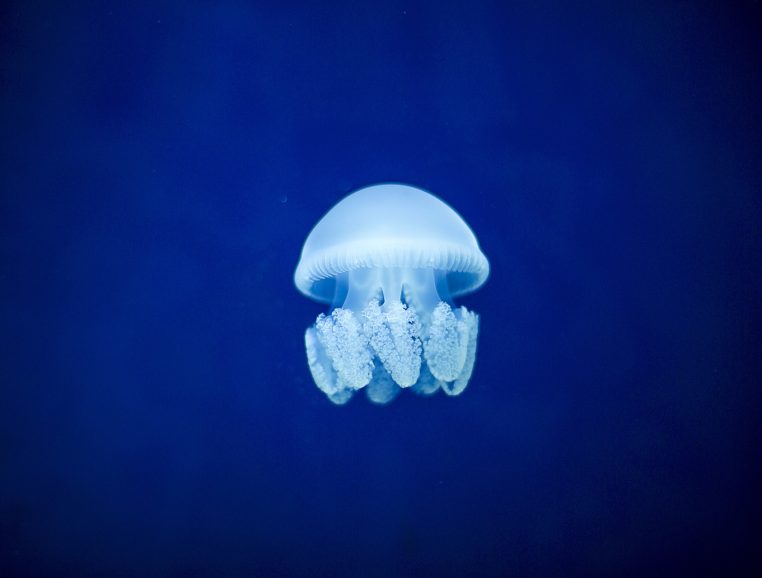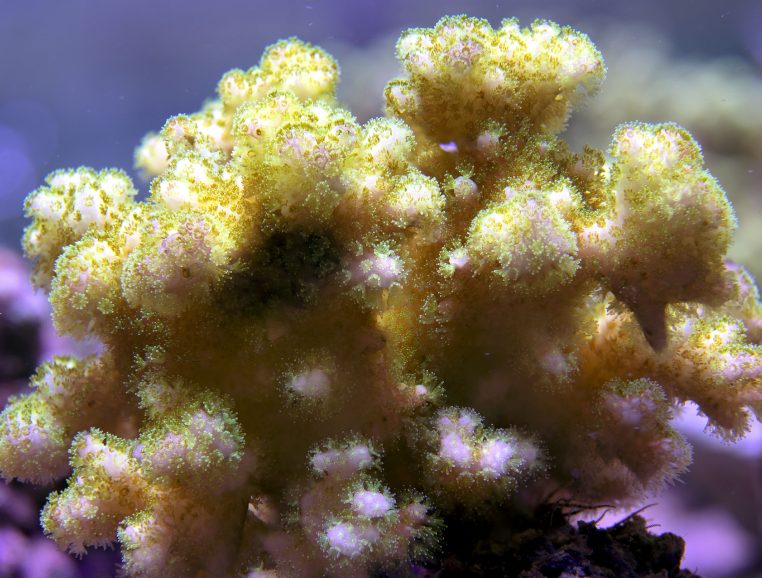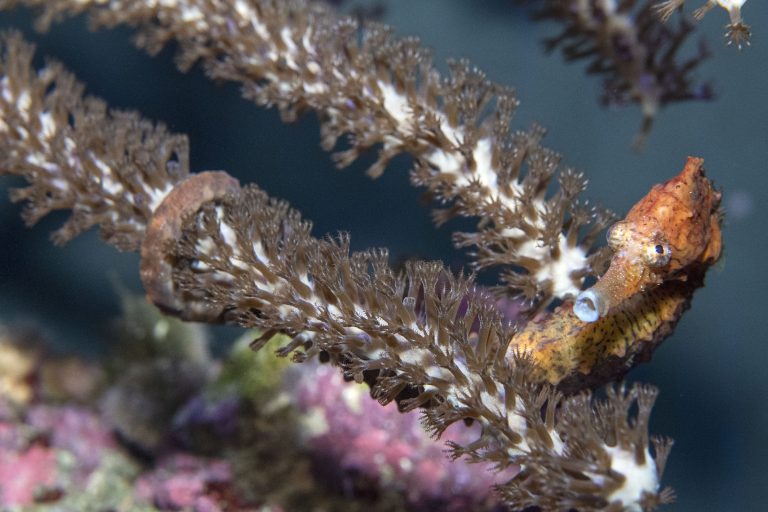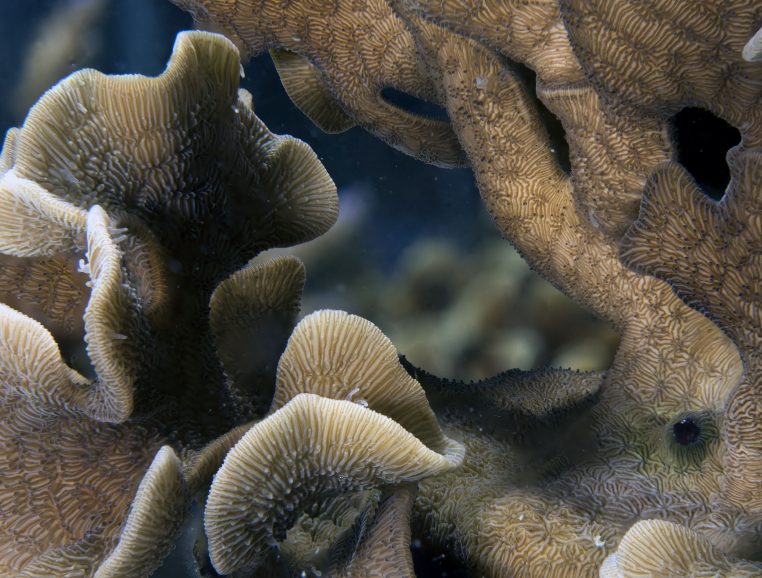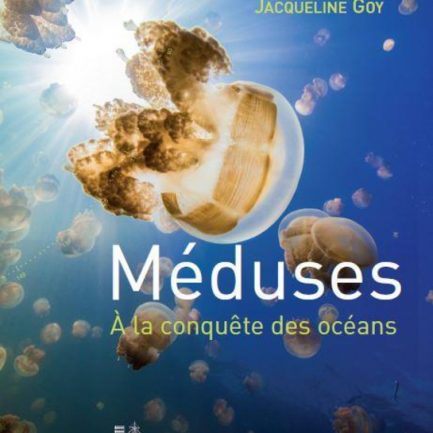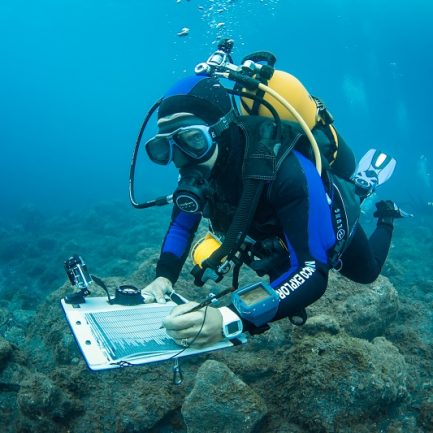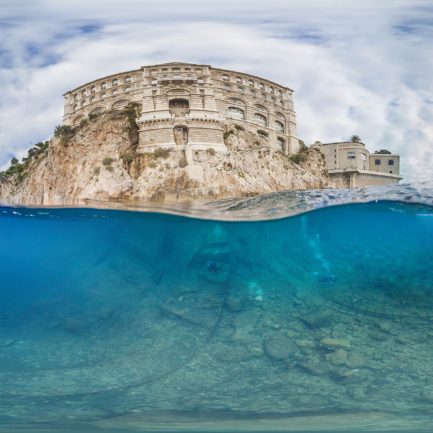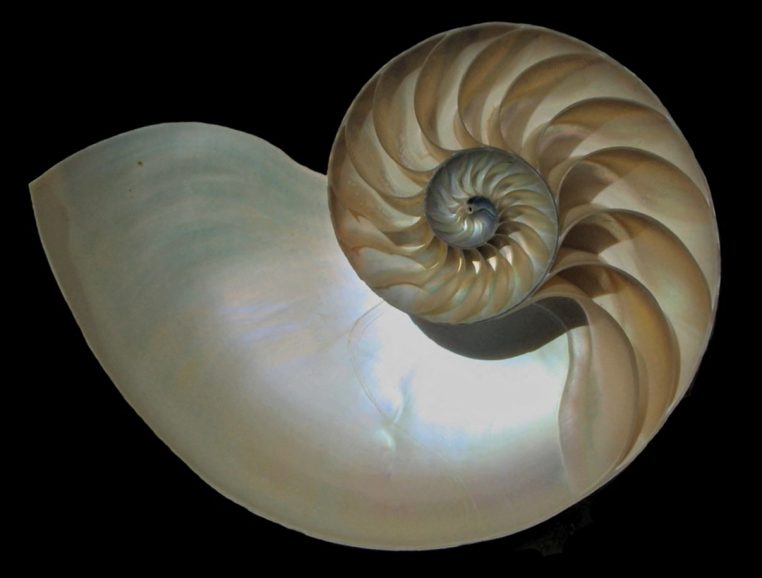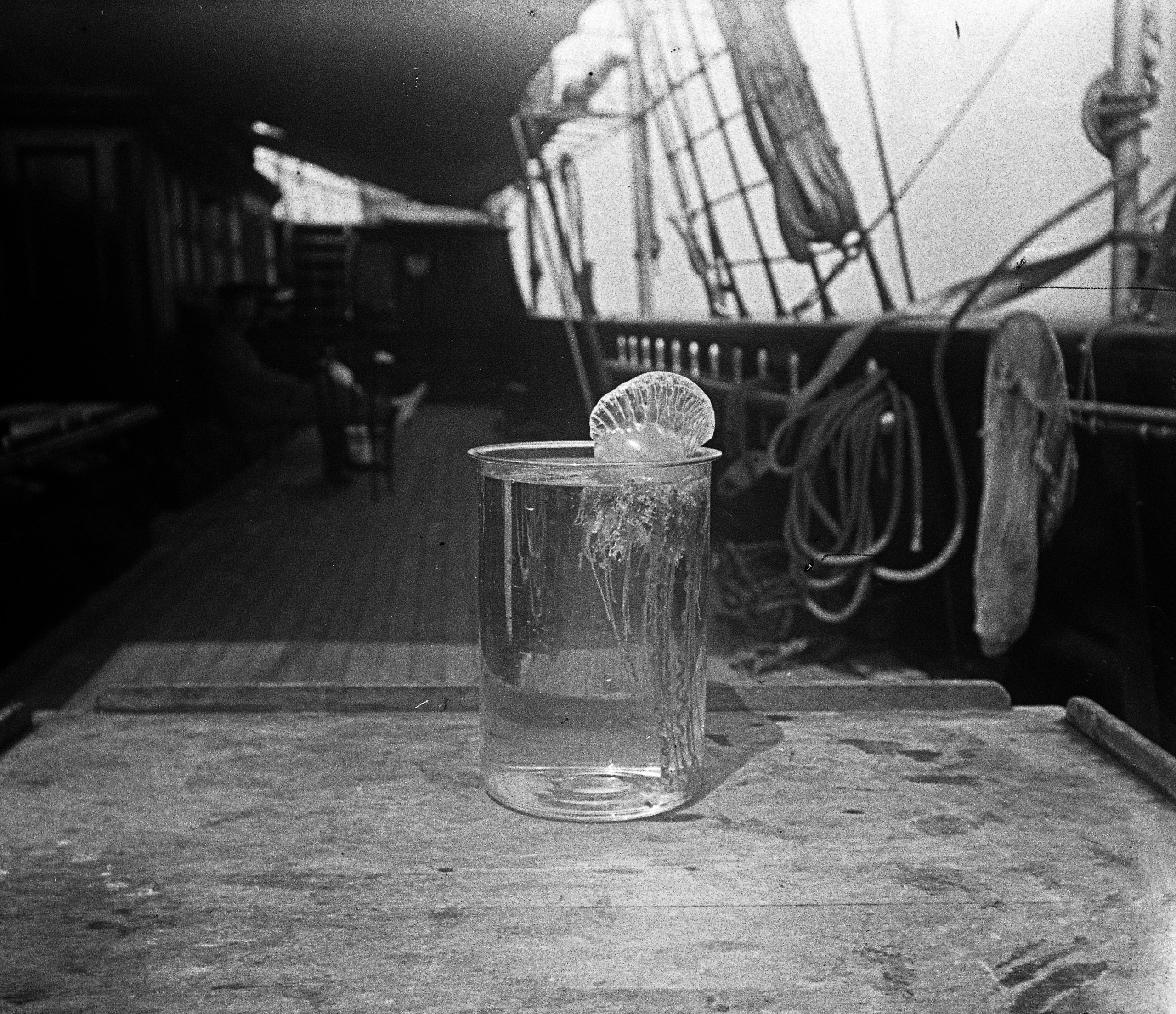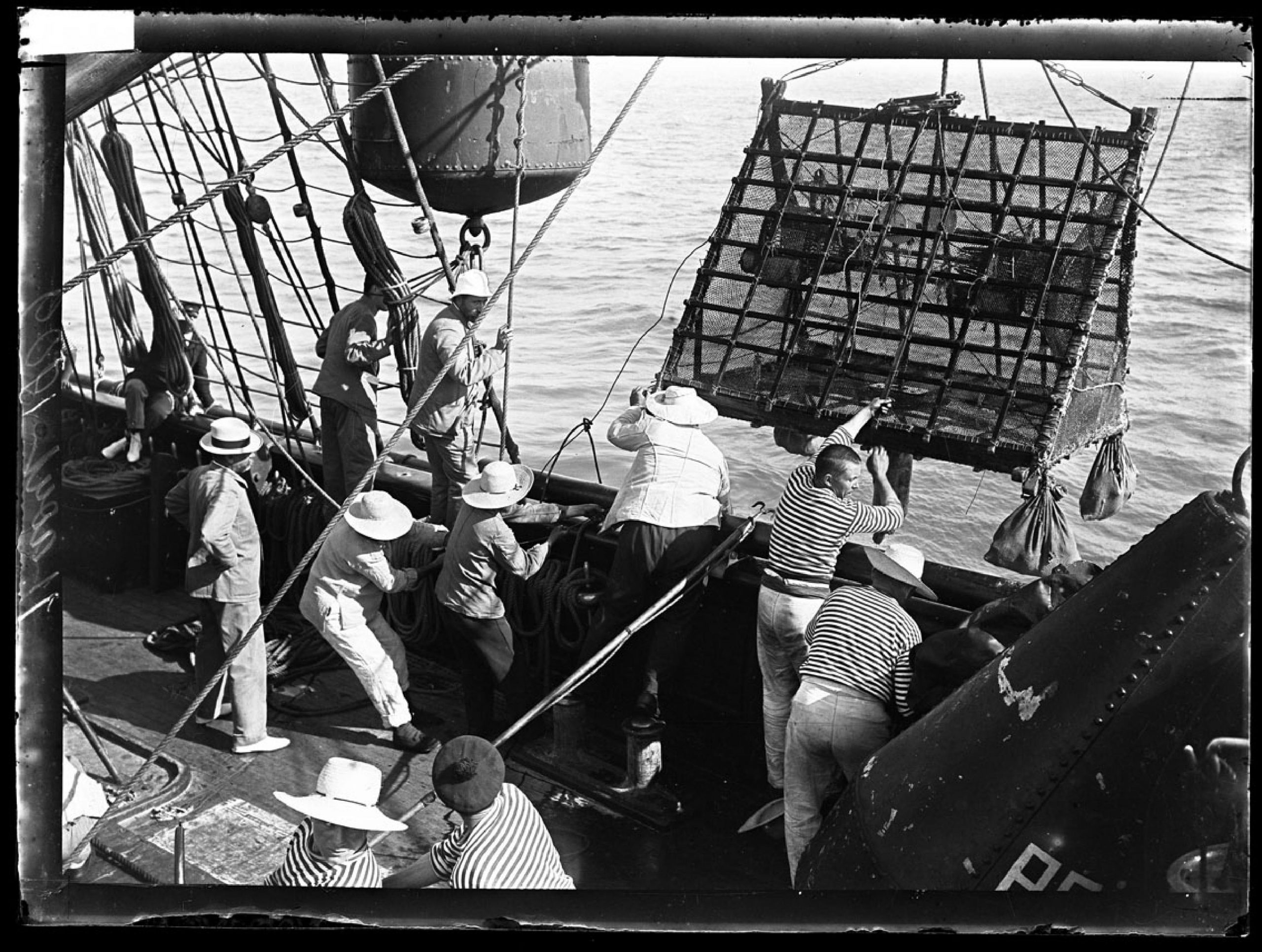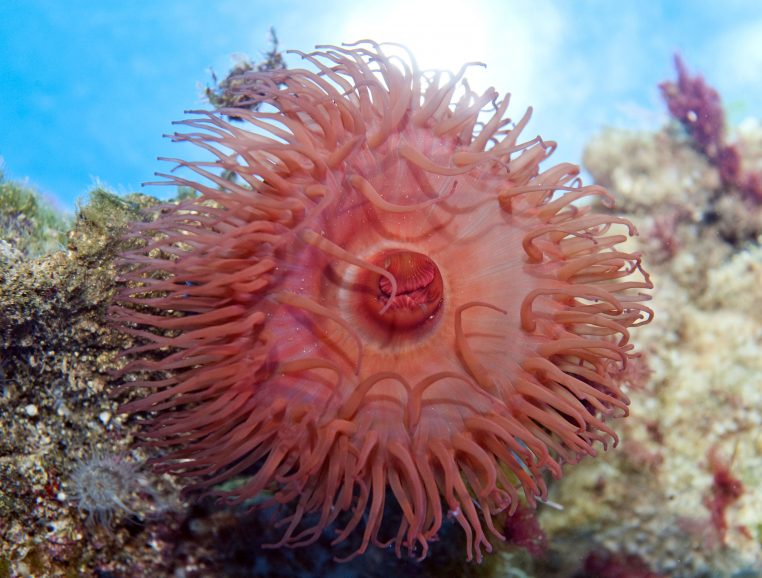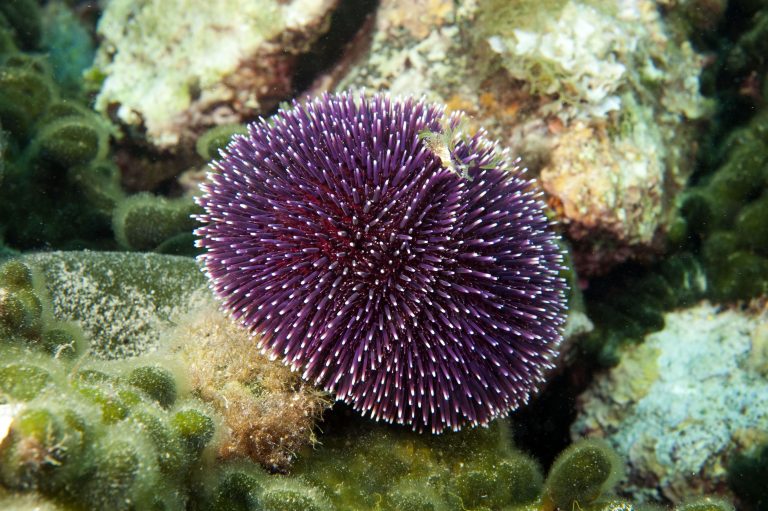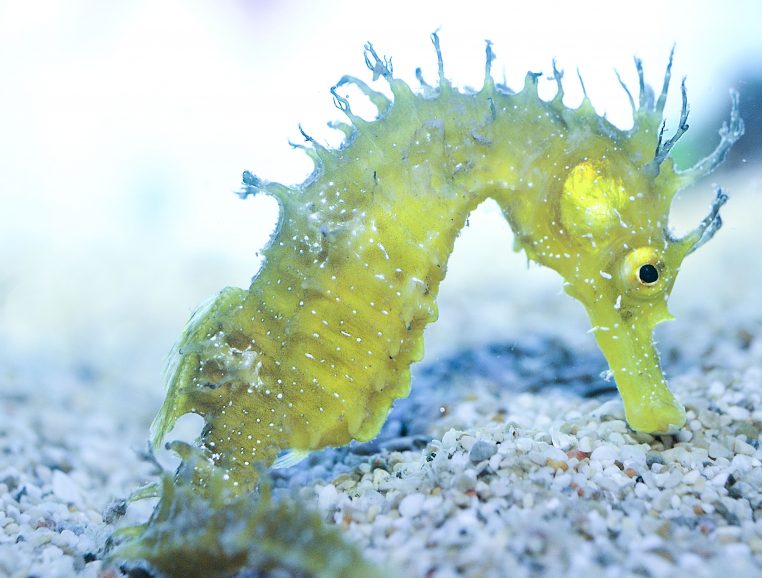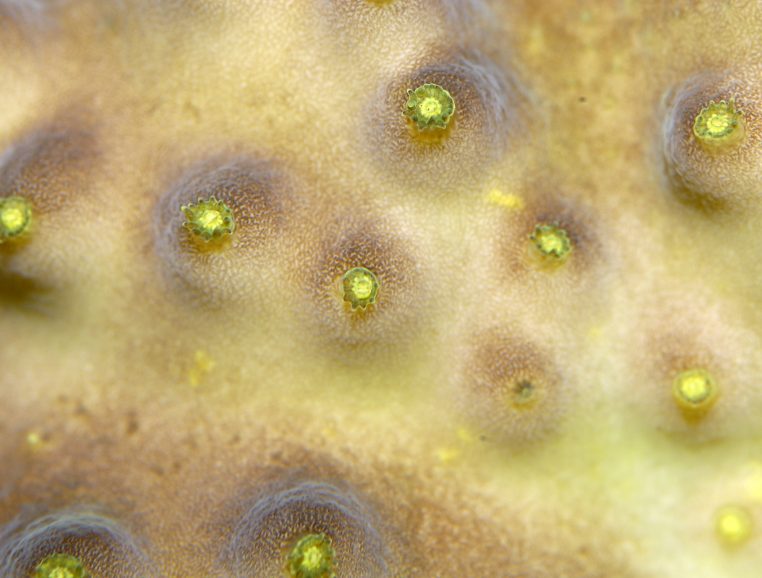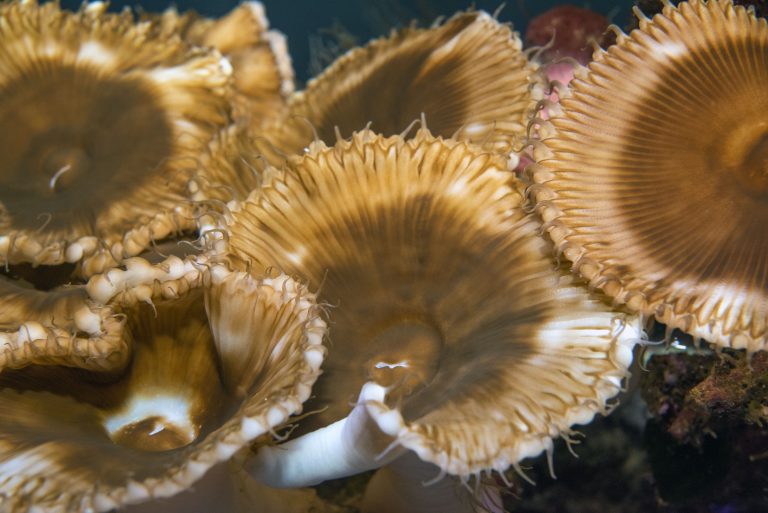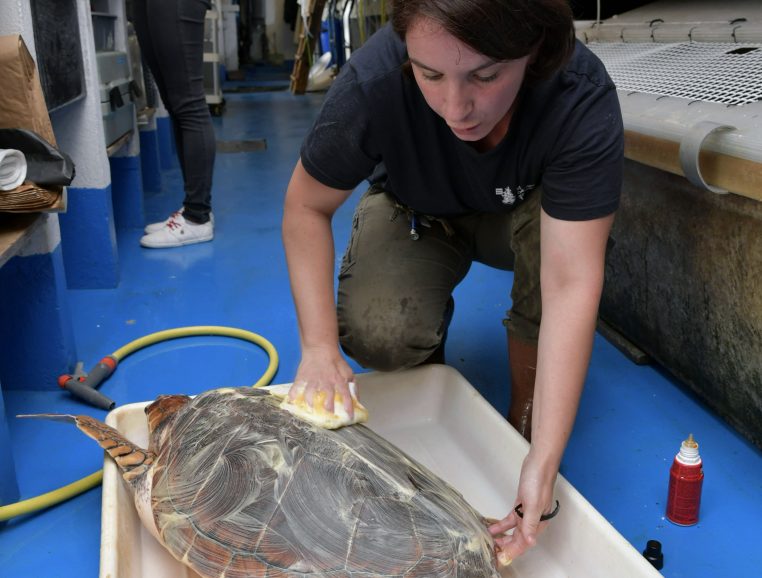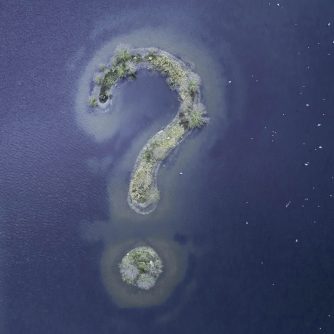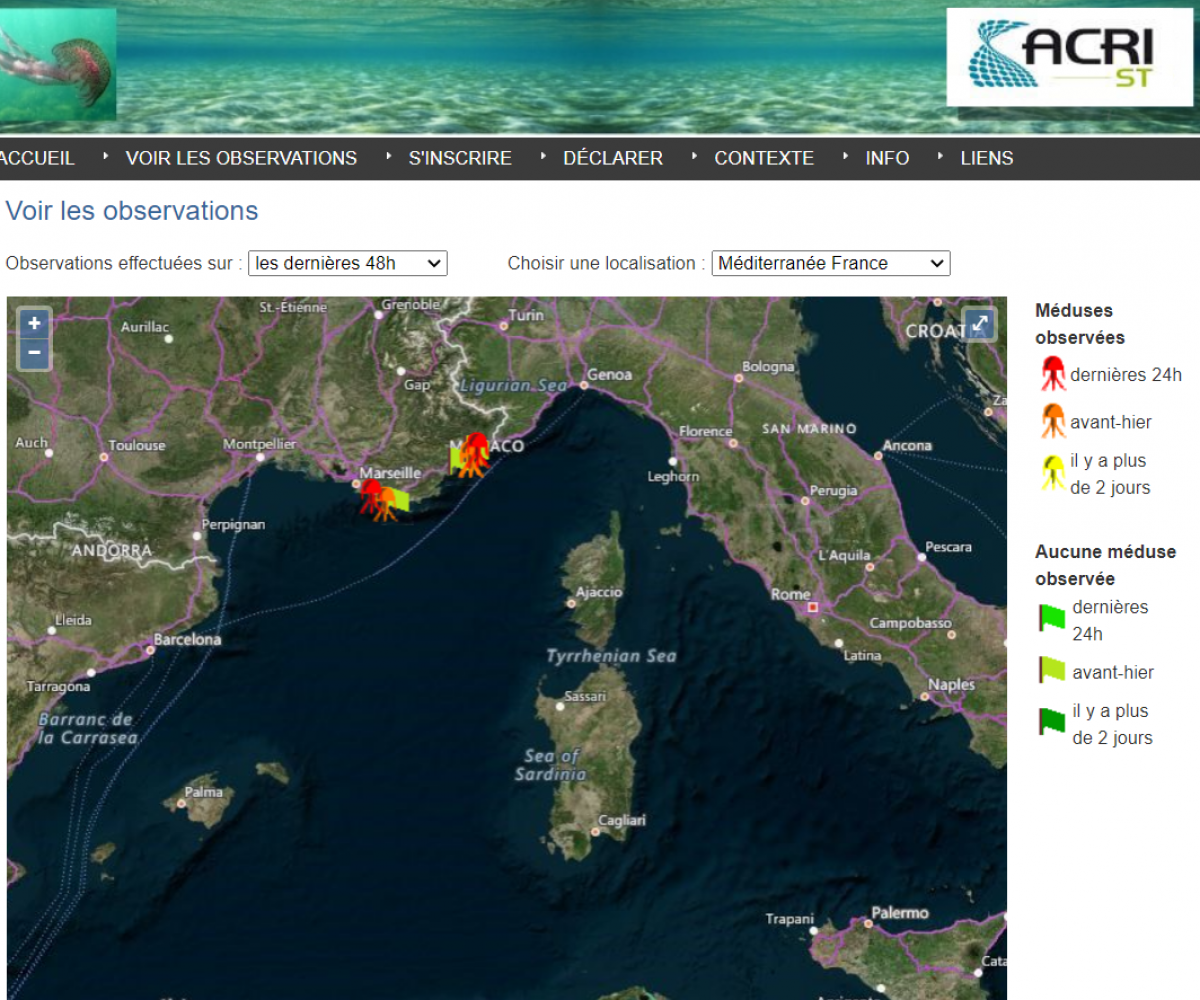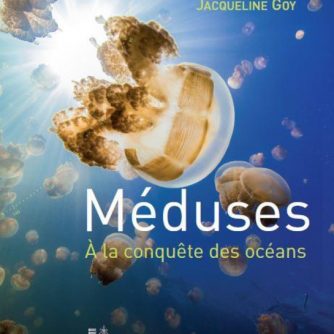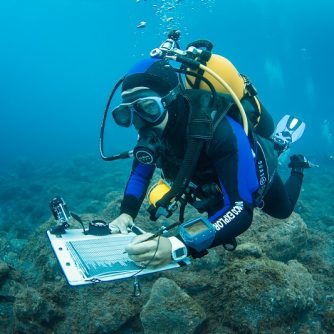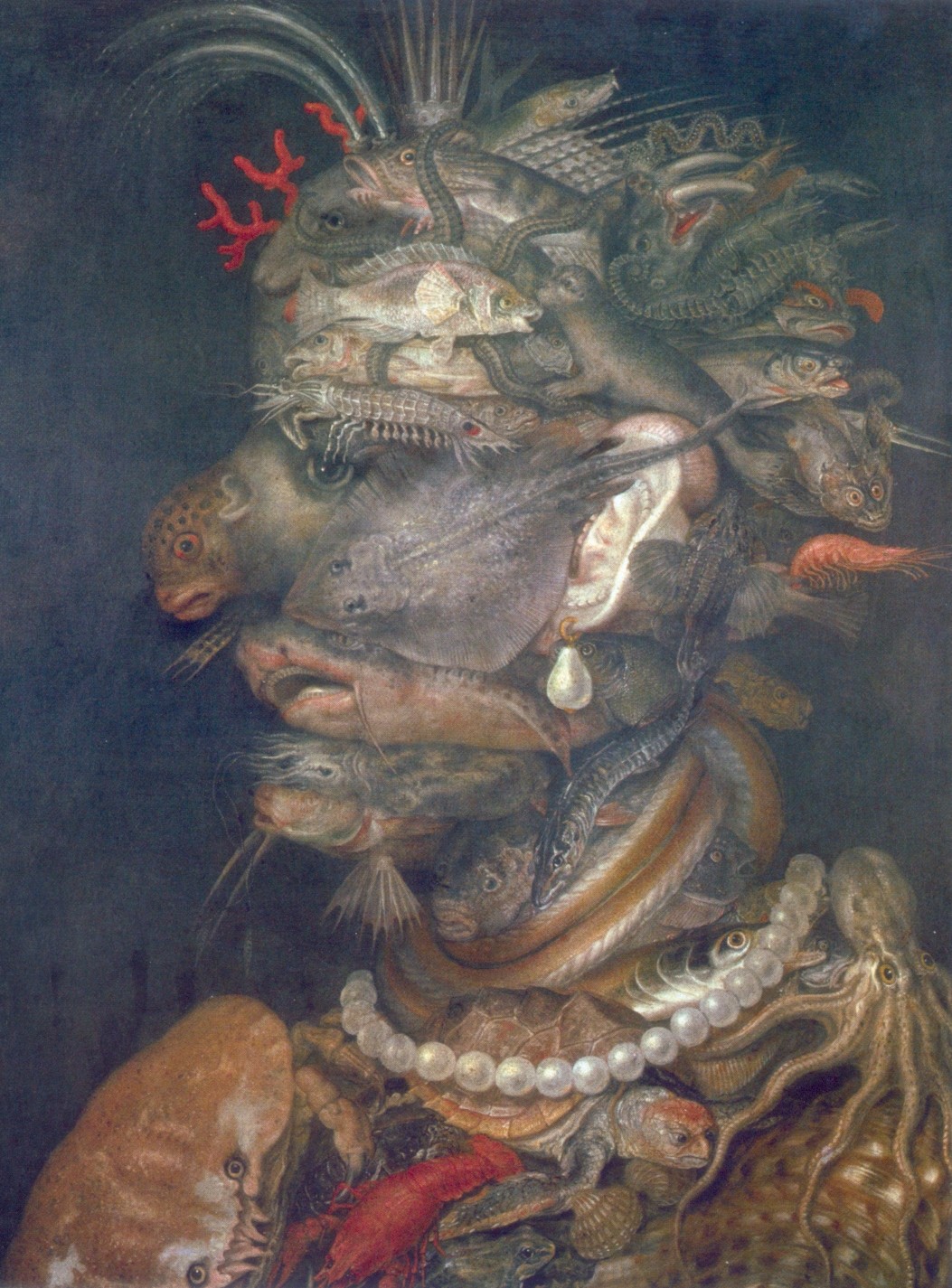Getting involved yourself
Influencer for the Ocean
BECOME THE VOICE OF THE OCEANS
The ocean is the cradle of life on our planet. It is still home to an extremely diverse range of life: 34 of the 36 existing phyla, 14 of which have remained exclusively marine, 300,000 known species and even more unknown species.
The particularities of marine organisms make them an unexplored reserve of therapeutic avenues for the future.
Examples of molecules extracted from living organisms abound, used as anticancer, antimicrobial, antiviral, anti-inflammatory, antidiabetic, antihypertensive, anticoagulant and antioxidant agents. Of the 145,000 to 150,000 natural substances described, it is estimated that some 25,000 products of pharmacological or cosmetic interest have already been obtained from marine organisms, more than 30% of which are produced by sponges. This number has increased over the last few decades, suggesting that many new remedies will be available in the near future.
FIND OUT MORE
The conditions to which marine animals are exposed (yes, in terms of biomass, the ocean is more the domain of animals, whereas the terrestrial environment is more the domain of plants) are as diverse as they are original. In the abysses plunged into eternal night, ecosystems are organized around hydrothermal springs. The energy no longer comes from the sun, but from the chemistry of these very hot waters, loaded with sulfur and minerals. In polar waters, fish and invertebrates can withstand temperatures around 0°C. And all over the world, animals fixed to the bottom have to develop a biological arsenal to defend themselves and preserve their living space, since they cannot escape from predators.
a chemical weapons race
For millions of years, the marine environment and in particular the coral reef has been in a chemical arms race! In a highly competitive environment, organisms produce metabolites and chemical mediators that play a fundamental role in the structuring and functioning of ecosystems, for example in competition for space, colonisation of surfaces, defence against predation, seduction for reproduction, etc. These attractants or repellents are of great interest in various fields of chemistry for the living (human and animal health, cosmetics, phytopharmacy, antifouling paints…).
The first significant work in the chemistry of natural marine substances was that of Professor Werner Bergmann, in 1951, who isolated from a Florida sponge unusual nucleosides (building blocks of nucleic acids, DNA and RNA) that pharmacochemists had the idea of using to design anti-tumour molecules. In 1969, researchers discovered in a Caribbean gorgonian Plexaura homomalla large quantities of a prostaglandin (molecules capable of causing or stimulating uterine contractions) that the pharmaceutical industry was struggling to synthesize. Today, most of the marine-based molecules in clinical development are intended for the treatment of cancers or the fight against viruses.
See also
Getting involved yourself
A valuable source of inspiration
Biomimicry and “bio-inspiration” (some researchers consider that we do not copy nature but are inspired by it) are approaches that consist in studying nature in its innumerable forms (animals, plants, fungi, micro-organisms, ecosystems). They offer the possibility of changing the way we grow or raise organisms, make materials, store information, heal ourselves or produce energy.
Coral reefs, because they are extremely productive communities, rich in biodiversity and the territory of expression of a multitude of chemical mediators, constitute a precious source of inspiration in terms of health, for our contemporary cities in search of effective and sustainable solutions.
See also
Getting involved yourself
In the summer of 1901, Prince Albert I led his annual Atlantic expedition from the Cape Verde Islands to the Azores. During previous campaigns, with Dr. Jules Richard, his close collaborator, he had had the opportunity to observe that the sailors manifested an extremely sharp pain, which could go as far as syncope, when they came into contact with a kind of jellyfish, a pelagic cnidarian called Physalia physalis. He thought that a venom was probably involved.
Charles Richet, Professor at the Faculty of Medicine of Paris, and Paul Portier, assistant of physiology at the Sorbonne, were invited to join the expedition in order to isolate this venom and study this phenomenon. The work carried out on board the second Princess-Alice with the physalie, and then on their return to Paris, especially with the anemones Actinia equina and Anemonia cerae, consisted of injecting cnidarian extracts into guinea pigs (dogs and pigeons), with a sufficiently long interval between each injection and using low doses of toxins.
Instead of being immune, the guinea pigs became increasingly sensitive, even dying. Richet and Portier published the discovery of anaphylaxis in 1902 and defined it as follows: ” We call anaphylactic, as opposed to phylaxis, the property of a venom to diminish and not reinforce immunity when injected in non-lethal doses. This discovery laid the first foundations of allergology (all the knowledge relating to the reactions caused in the body by the introduction of a foreign substance called an antigen) and earned Charles Richet the 1913 Nobel Prize for Physiology and Medicine.
Experimenting with extracts from the tentacles of certain sea anemones, Richet and Portier found that dogs injected with the extract became overly sensitive to the action of a second dose. These dogs could be killed by an amount that was only a fraction of the fatal dose for an untreated dog. They called this state of abnormal sensitivity of the subject to the action of certain substances Anaphylaxis. ...] There was at first much surprise and disbelief, for scholars had hitherto been accustomed to regard the immunization or sensitivity-decreasing reaction as the appropriate response of an organism to the injection of foreign substances. It was therefore surprising that the exact opposite phenomenon could occur. Thus the laws of immunity were completely overturned.
Le Prince Albert Ier Avril 1921
Prince de Monaco 1889-1922
See also
Getting involved yourself
Breakthroughs in physiology, medicine and chemistry
The ocean offers valuable models for fundamental research and many studies have led to decisive advances in physiology, medicine and chemistry. No less than thirteen Nobel Prizes in medicine or chemistry have been awarded for work based on aquatic organisms: fish, cnidarians such as the jellyfish Aequorea victoria or the siphonophore Physalia physalis, molluscs (bivalves, cephalopods, sea slugs), crustaceans (crabs), echinoderms (sea urchins, starfish), even protozoa…
It was through his work on the intestines of anemones or on a starfish that Ilya Ilyich Mechnikov discovered phagocytes and phagocytosis (the process by which a cell engulfs and then digests a foreign substance) in 1883. He shared the 1908 Nobel Prize in Physiology and Medicine with Paul Ehrlich and has since been considered the father of cellular immunity.
By measuring the changes in electrical charges and the way nerve impulses are exchanged between cells in a very large nerve fibre of a John CarewEccles, Alan Lloyd Hodgkin and Andrew Fielding Huxley were pioneers in the study of nerve impulse transmission and were jointly awarded the 1963 Nobel Prize in Physiology or Medicine.
AND THE SOURCE OF MANY NOBEL PRIZES
The sea urchin served as a model for Otto von Warburg’s discovery of anti-polyspermia calcium waves (only one sperm per oocyte). For Eric Kandel and his work on the molecular basis of memory, it was a sea slug.
While studying the cell cycle of sea urchin eggs, Sir Tim Hunt discovered cyclins and demonstrated that these proteins, which break down during the different phases of the cell cycle, play a crucial role in its regulation, not only in echinoderms, but also in vertebrates. This research later had important implications for the study of key molecules involved in cancer development (cyclin and kinase) and earned Timothy Hunt, Leland Hartwell and Paul M. Nurse the 2001 Nobel Prize in Physiology and Medicine.
The 2008 Nobel Prize in Chemistry was awarded to Osamu Shimomura, Martin Chalfie and Roger Tsien for the discovery of electroluminescent organs in the jellyfish Aequorea victoria of a green fluorescent protein (GFP) that glows intensely under ultraviolet light. This protein truly revolutionized the life sciences by making it possible to track, among other things, how cancerous tumors form new blood vessels, how Alzheimer’s disease kills brain neurons, and how HIV-infected cells produce new viruses.
This protein, synthesized since 1994, is used in medical research. Scientists are now able to modify the gene that controls GFP production to give different stainings that allow us to study proteins in their natural environment and understand certain processes to improve our knowledge of the complex network that is the human brain.
Aequorein, another protein extracted from the jellyfish Aequorea victoria, is used to measure calcium in muscle tissue at the level of nerve endings.
See also
Getting involved yourself
BECOME THE VOICE OF THE OCEANS
More than a thousand compounds isolated from marine organisms have been shown to have antiviral effects, and a recent study found that griffithsin, a protein isolated from thered alga of the genus Griffithsia sp.… could be an inhibitor of certain coronaviruses by inhibiting their spike proteins, which give them their crown-like appearance, thus preventing their entry into host cells.
From the haemoglobin of a marine worm, the arenicola, which lives in the sand, the biotechnology company Hemarina has developed a “molecular respirator”, a molecule of marine origin which has the property of storing and transporting oxygen better than human haemoglobin (it binds 40 times more!). This molecule should enter a test phase on patients suffering from the coronavirus with the aim of treating respiratory distress syndrome linked to Covid-19, thus freeing up artificial respirators for other patients and relieving hospital services. This molecular respirator could find other applications in very specific cases, such as the transport of organs before transplantation.
FIND OUT MORE
The Marseille-based company Coral Biome is interested in palytoxin (produced by soft corals of the genus Palythoa, order Zoantharia), a highly toxic molecule used in the treatment of certain cancers.
Numerous compounds, currently in clinical development for anticancer activities, have been isolated from the colonial ascidians Didemnum molle, common sessile marine invertebrates (characterized by their attachment to a support) living within the coral reef.
Approximately 1,000 times more effective than morphine, an analgesic synthesized by copying a molecule present in the venom of the Conus magus cone (a marine gastropod mollusc) is particularly indicated for alleviating intense chronic pain.
The Ocean is thus a huge library as well as a pharmacy. It is essential to recognise and value these functions, and to avoid seeing them evaporate as a result of climate change, overexploitation of species and the degradation of marine ecosystems, driven by an overly short-sighted view focused on the profits of fishing, hydrocarbons and soon mineral resources.
See also
Rana
The sea turtle ambassador
In 2014, Rana was still just a baby loggerhead, one of seven species of sea turtles on the planet. Found stranded in the port of Monaco, she was barely saved by the Oceanographic Museum team. Today, fully recovered, Rana travels the oceans. Becoming a symbol of the sea turtle cause, her story helped inspire the creation of a turtle care centre at the Oceanographic Museum in Monaco.
Le fabuleux destin de Rana la tortue
The story begins on April 9, 2014: a young loggerhead turtle is found in hypothermia in the port of Monaco while still a baby.
Weakened, dehydrated and close to death, she measures barely ten centimetres.
She was then entrusted to the teams of the Oceanographic Museum of Monaco who took care of her and provided her with the necessary care for her survival.
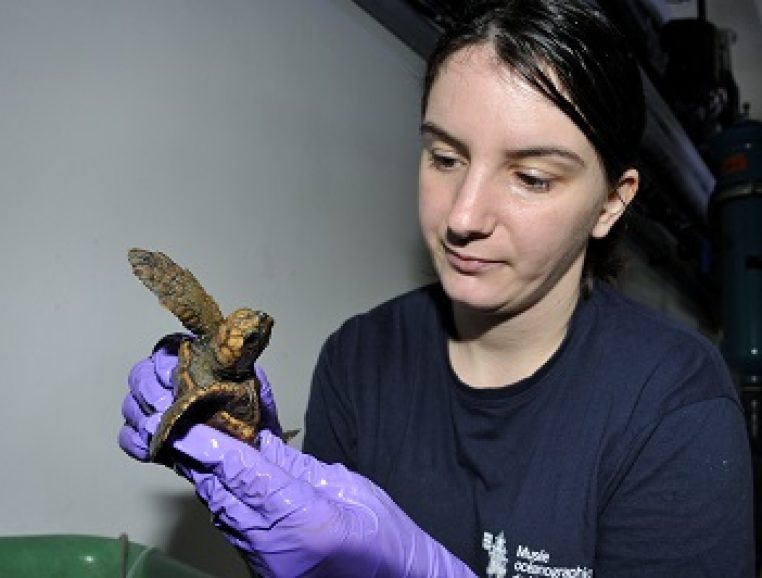
Four years and 23 kg later
Named Rana, after her godmother, a young student with a passion for marine biology, the turtle has regained its strength over the years and is developing in the best possible conditions.
As of April 2018, four years after her discovery in the port of Monaco, Rana measures 53 centimeters and weighs over 20 kilograms.
See also
Are there any whales in the Mediterranean?
The answer is yes! There are several thousand whales living in the waters of the Mediterranean. It is even not uncommon to see their breath from far away, on crossings to Corsica, for example. Take note, however: human activity is a source of disturbance for this giant mammals, and leaving them in peace is important.
MAMMALS OR WHALES?
There are about ten species of marine mammals in the Mediterranean. Dolphins, of course (common, blue and white, Risso’s, Bottlenose dolphin), but also pilot whales, ziphiuses and some monk seals.
More imposing, the sperm whale and the fin whale are also present in the waters of the Grande Bleue. But by the way, which of them are whales?
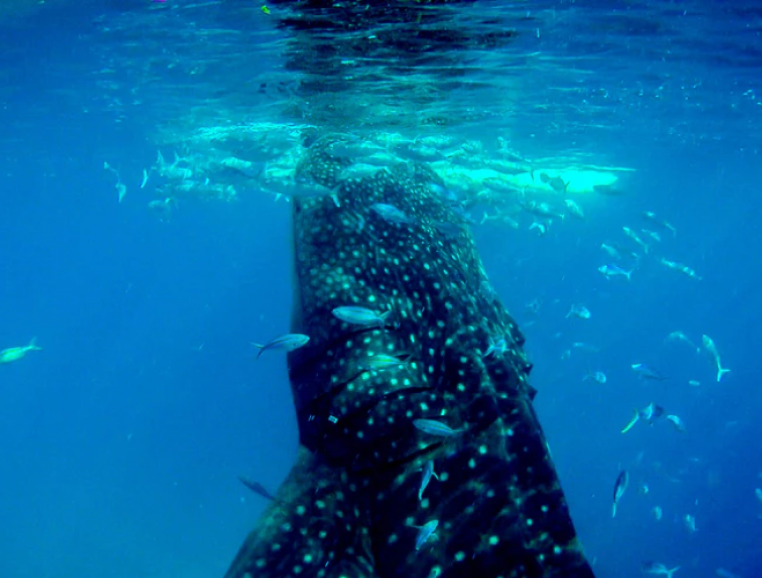
Baleens or teeth?
In common parlance, we tend to refer to all large cetaceans as “whales”. However, only “baleen whales” (mysticetes) are really whales.
The fin whale (up to 22 metres and 70 tonnes) is the main baleen whale in the Mediterranean.
It rubs shoulders with numerous “toothed cetaceans” (odontocetes), the largest of which is the sperm whale (up to 18 metres and 40 tonnes).
Despite its imposing stature, the whale is not strictly speaking a whale, and belongs to the same family as orcas, dolphins, pilot whales, porpoises, etc.
A GIANT OF THE SEAS
The fin whale is the second largest mammal in the world, behind the blue whale.
Although it is still difficult to assess its population precisely, it is estimated that a thousand individuals live in the protected area of the Pelagos Sanctuary, whose purpose is to protect marine mammals in the western Mediterranean, between France and Italy.
The fin whale feeds mainly on krill, small shrimp that it traps in its baleen plates in large quantities. It is capable of diving to depths of over 1,000 metres.
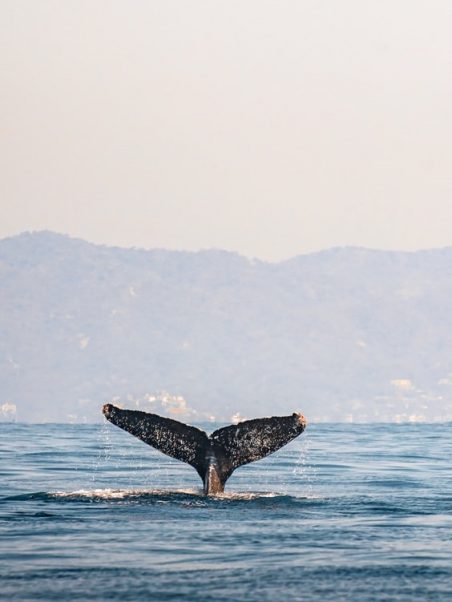
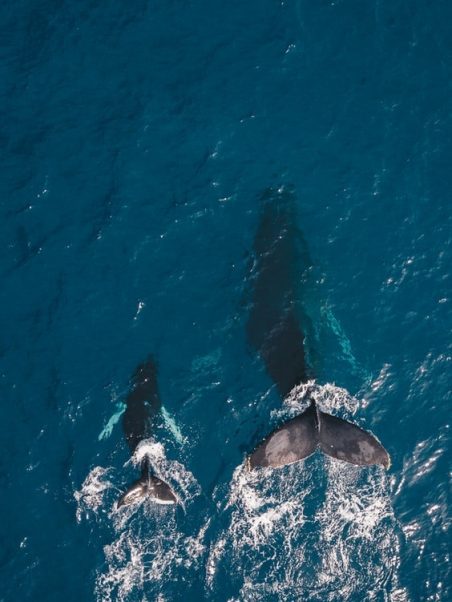
RISKS OF COLLISION
Within the Pelagos Sanctuary, small pups (about 6 metres and 2 tonnes) are born every year in the autumn.
They can live up to 80 years, if their trajectory does not meet that of the fast ships frequent in summer and which they do not seem to be able to avoid when breathing on the surface.
As with sperm whales, this is currently the main risk of accidental death for them. Hence the interest in techniques developed in partnership with certain shipping companies to equip boats with detectors and prevent collisions with these large mammals.
See also
THE SHARKS
Threatening or threatened?
Sharks: from myth to reality
The mention of the animal is still frightening and very unpopular. A person who is ruthless in business is often referred to as a “shark”! However, beyond the mythical image of the shark, the reality is quite different.
Overcome your prejudices about sharks !
In 2013, the Oceanographic Institute’s ” Sharks, Beyond the Misunderstanding”program aimed to change the way people look at sharks. Conferences at the Maison des océans in Paris gave the public the opportunity to talk with leading specialists and shark lovers who came to talk about their exceptional experience of living close to these great predators.
The book ” Sharks, beyond the misunderstanding ” takes stock of these super predators with a terrible reputation.
The ecology of sharks: remarkably adaptable
A fin suddenly breaks the surface before diving as a bather approaches… This is a sight that is enough to empty the most crowded beach in a few seconds. A representation engraved in our imagination, which crystallizes all our fears.
Always on the lookout for prey that will have little chance of escaping their vigilance, outrunning them or resisting their impressive jaws, sharks have the reputation of being the most ferocious of marine animals, and man’s “best enemy”.
The image of the super-predator has haunted us for centuries. The cinema as well as the media are there to terrorize even the most marine among us. The reality is not so caricatured. These fish, much less dangerous than we think, are no less fascinating.
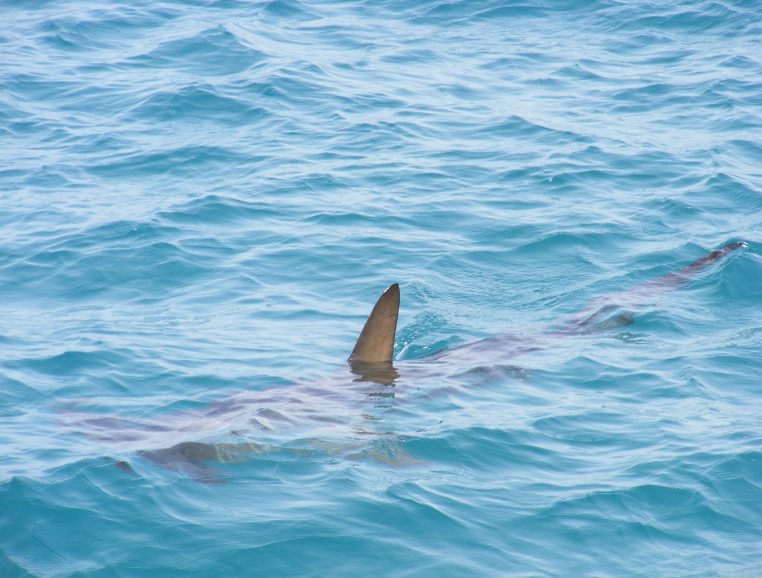
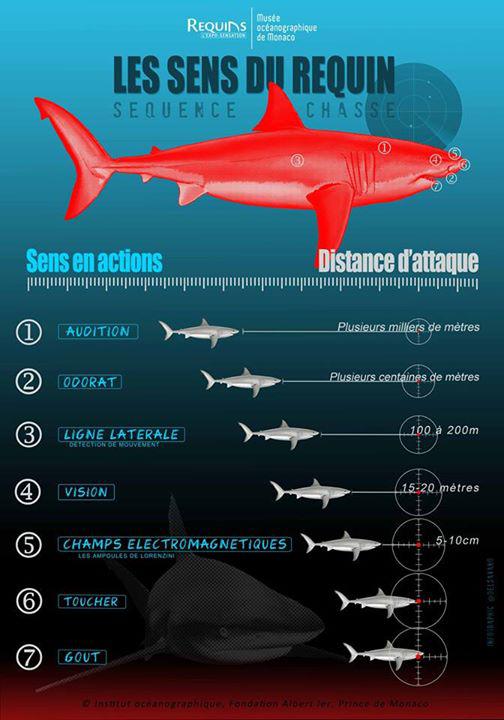
Shark attacks: leaving your preconceptions behind
To detect prey, the shark is equipped with a number of organs and sensory sensors that allow it to orient itself and move, making it an efficient predator.
It is not one sense in particular that gives the shark the advantage, but rather the complementarity and synergy between them all. Depending on the environmental conditions, they will be useful at different times.
The sense of smell is effective over a few tens of kilometres, to detect prey at a distance; vision allows the preparation of an attack over a few tens of metres, and the detection of electric fields allows the exploration of the surroundings within a radius of two metres.
The super powers of sharks
Do sharks have ears?
Do sharks have good eyesight?
Sharks do not have ears as such, but pores on the top of the head.
In the absence of an eardrum, the whole body acts as a receiver of sound vibrations which are then transmitted to the inner ear.
The latter is particularly powerful and governs not only hearing but also balance and orientation.
Sharks are sensitive to low, or even very low, frequencies, which propagate best in an aqueous environment.
Often hampered by the turbidity of the water, sight is perhaps the sense least used by sharks in searching for and detecting prey.
In general, it is the contrasts that they distinguish particularly by twilight vision.
The glow that can be seen in the eyes of the great white at dusk or in semi-darkness is due to the presence of a kind of reflector, the tapetum lucidum (Latin for “shiny carpet”) which improves vision in low light.
The sense of smell, a very powerful sense
The ampoules of Lorenzini
The sharks smell “in stereo” and detect where the smell is coming from, and trace it back to its source for about ten kilometres. They are sensitive to dilutions, for blood, of the order of one centilitre (the value of a thimble) diluted in 100,000 litres of water.
These are tiny pores scattered around the eyes and mouth, which detect the weak electrical currents produced by living things (even those buried in the sand), as well as variations in water temperature and salinity.
The sensation of touch in sharks
The lateral system, a specific sensor
The highly developed sense of touch is similar to a kind of “skin taste” made possible by the presence of sensory crypts all over the body. These receptors, distributed throughout the body, allow the shark to appreciate the environment in which it is moving.
A simple touch is enough to tell the shark if the prey it is considering is suitable. That’s why he sometimes just shoves without biting.
The strength of the animal and the roughness of the skin make this contact dangerous.
But it also has a “real” taste, via the taste buds, also called “barrel organs”, which line its oral cavity
Sharks do not perceive their prey by smell alone.
Like other fish, they have thousands of pores along a line from head to tail that are sensors for pressure and mechanical vibrations.
The presence of these organs explains why sharks react so immediately to sounds produced in the water by blows or colliding objects.
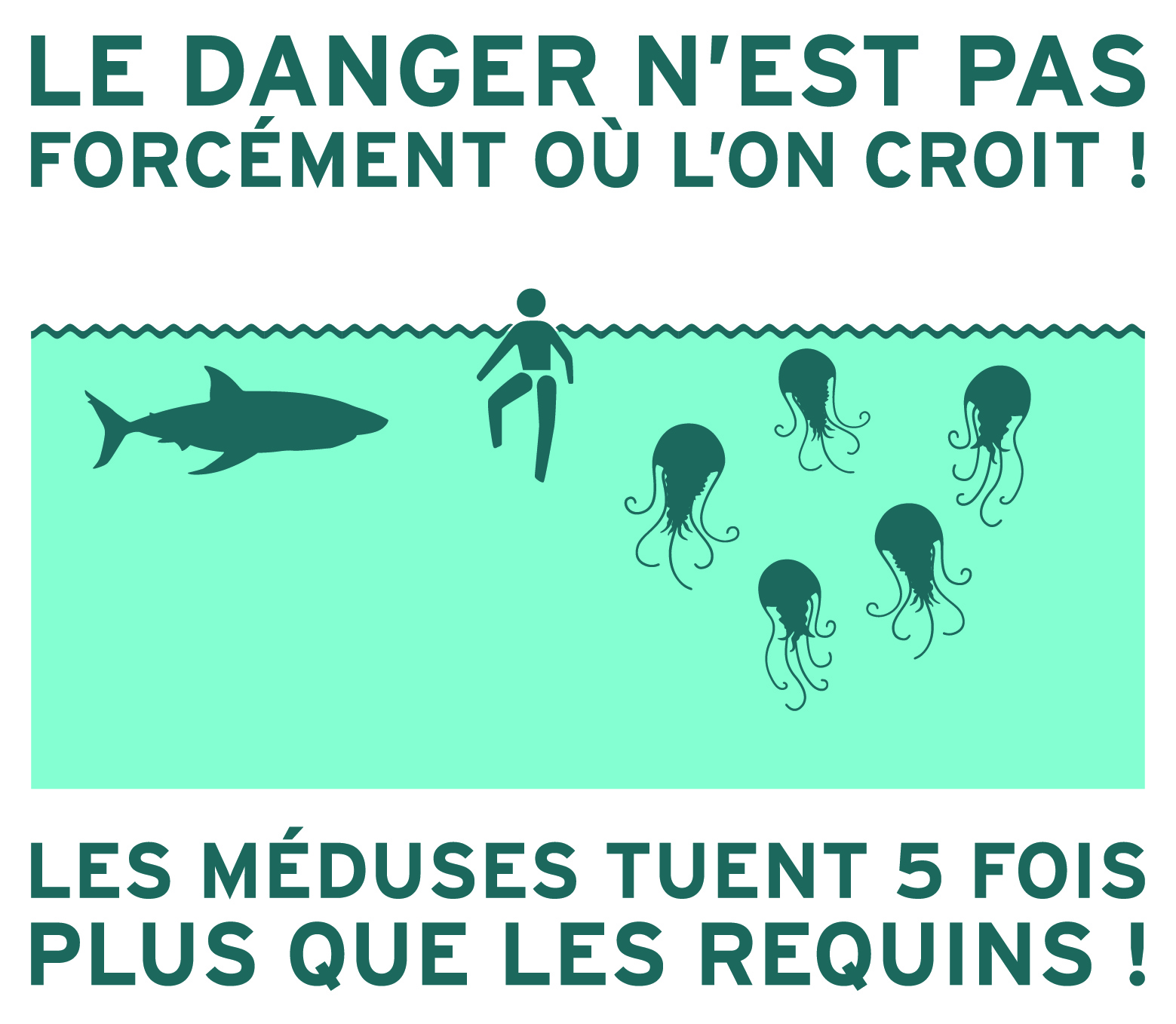
Are all shark attacks fatal?
It is not known why sharks sometimes attack humans. A misunderstanding or a defensive reaction is often cited. It is also possible that the shark may see humans as potential prey, even if they are not part of its usual diet.
Given the size and strength of a human being and a shark, a bite, even if it is the result of a mistake, can be serious and even fatal for the victim.
The few dozen attacks that occur each year around the world do not always result in death. In terms of dangerous animals, mosquitoes are the most dangerous serial killers. Even dogs, which are domestic animals very close to humans, kill more than sharks.
Attacks under high surveillance
The first global shark attack file, theInternational Shark Attack File (ISAF), was created in the United States in 1958.
Developed by a group of scientists at the request of the U.S. Navy, its objective was to investigate the respective roles of environmental factors and victim characteristics in triggering attacks.
The impact of shark accidents on the tourism industry has led to the creation of new research structures and databases: the Australian Shark Attack File in Australia and the Natal Sharks Board in South Africa, which now make it easier to compare shark attack figures.
In 2013 and 2014, under the impetus and chairmanship of H.S.H. Prince Albert II of Monaco, the Oceanographic Institute organised two international expert workshops on sharks to create a ” Shark Risk Toolkit “. Its objective: to bring together existing solutions around the world to protect against shark attacks, while putting into perspective the reality of the risks incurred by humans.
Protecting and conserving sharks: a worldwide emergency
Sharks are victims of fishing and bad practices. The industrialization of fishing and man’s voracious appetite for shark products mean that 50 to 150 million of these animals are killed each year by man.
The late sexual maturity of sharks and the low number of offspring are limiting factors in the renewal of their populations, and today shark populations are clearly threatened.
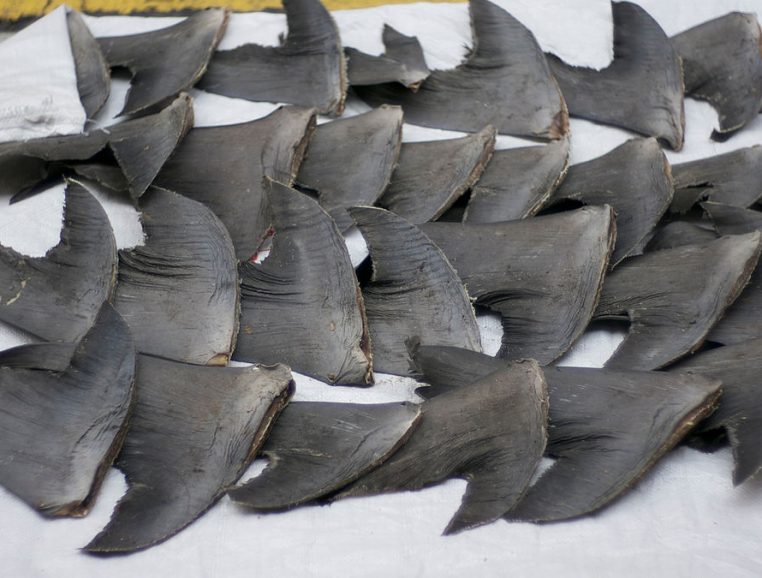
The horror soup
More than two-thirds of sharks are harvested solely for their fins. To satisfy the growing demand, some fishermen have found an extremely profitable solution, which consists in cutting off the fins on the spot and throwing back into the sea an animal that is condemned to death anyway. This is called “finning”.
Of the 100 million sharks killed each year, 73 million are killed for soup. Some countries prohibit this practice at sea and force fishermen to bring whole sharks back to port, in an attempt to limit the slaughter and not waste this resource.
Shark fin soup is a popular traditional Chinese dish with supposedly aphrodisiac properties. Long reserved for celebratory meals in Hong Kong, where 89% of the population serves it at wedding feasts, it became available to millions of people in the 1990s, following the Asian economic boom.
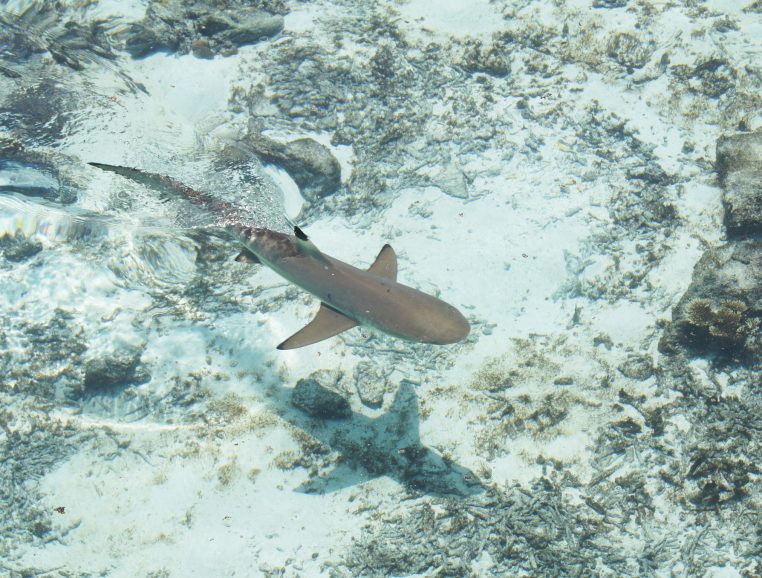
Sharks, essential to the balance of the oceans
Sharks are the keystone of marine ecosystems, ensuring their balance and resilience.
If sharks were to become extinct or scarce, ecosystems would be disrupted and many other species would be threatened by a “cascade effect”.
When a predator disappears, its usual prey grows rapidly and in turn increases the pressure on its prey.
The entire ecosystem is disrupted by the disappearance or depletion of top predators, including the various species of commercial interest.
The fishing industry may therefore suffer from a cull that it caused.
Shark and carbon storage
It has recently been recognized that cetaceans and large pelagic fish such as sharks and tuna play an important role in the climate change issue because of the biomass they represent.
Containing 10 to 15% carbon in their flesh, they sequester a lot of carbon in the ocean. When they die by natural mortality, old age or are eaten by predators, the carbon they contain is recycled into living matter or buried at the bottom of the ocean, sequestered for thousands, even millions of years.
However, when they are fished and extracted from the ocean, the carbon is then put into circulation on the surface of the planet and ends up as CO2, contributing to the greenhouse effect. To this must be added the large quantities of CO2 released by the fishing activities themselves, which are carried out in ever more remote locations.
To combat climate change, some experts advocate restoring fisheries and apex predators, i.e. stop fishing them and just leave them in the water.
Shark protection and conservation: a global emergency
In the past, it was considered that a good shark was a dead shark!
Recent research has highlighted the ecological role of sharks in marine ecosystems.
As predators at the top of the food chain, sharks regulate the prey populations on which they feed.
Overexploitation of these top predators has cascading effects in the food chain that are detrimental to the ecosystem and to fisheries, as it can lead to an outbreak of species undesirable to humans.
Because of their regulatory role, sharks are increasingly being incorporated into fisheries management plans.
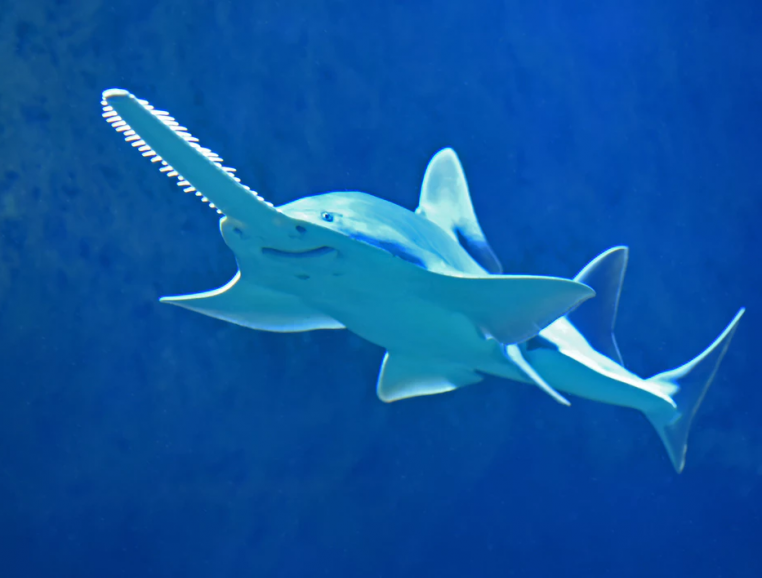
See also
The “toolbox” for defending against shark attacks
At the initiative and under the leadership of HSH Prince Albert II of Monaco, and thanks to impassioned discussions between international experts, a “toolbox for handling shark risks” was created. Its aim is to gather together all existing solutions from around the world for preventing shark attacks, while highlighting the actual risks undergone by people.
A document drafted during a meeting organised by the Oceanographic Institute
In 2013 and 2014, the Oceanographic Institute organised two workshops for international experts on sharks. In the wake of the second workshop, significant research work was carried out and produced this single document, the “toolbox for handling shark risks”.
This document, which overcomes the obstacle of conflict between man and animal, draws up a wide-ranging view of existing solutions and those in development to tackle the risk of shark attacks.
Instead of exterminating every shark in the ocean, this “toolbox” shows that an organised and peaceful cohabitation with sharks is now possible.
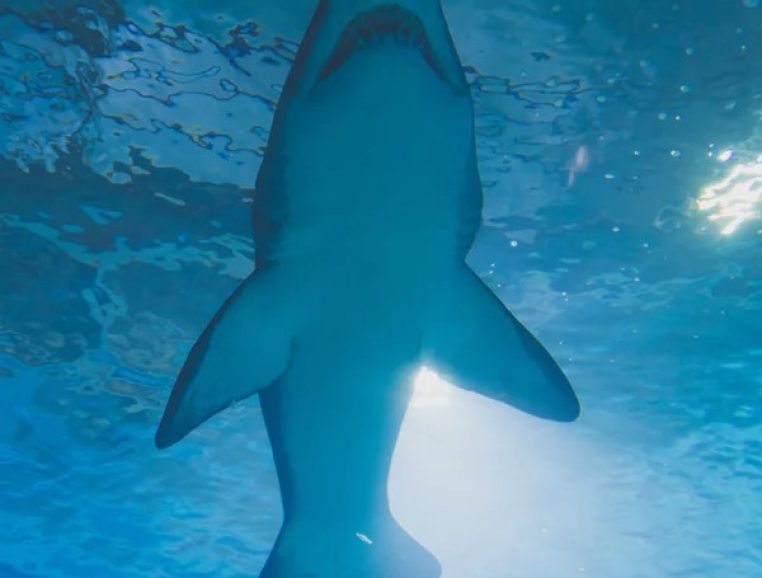
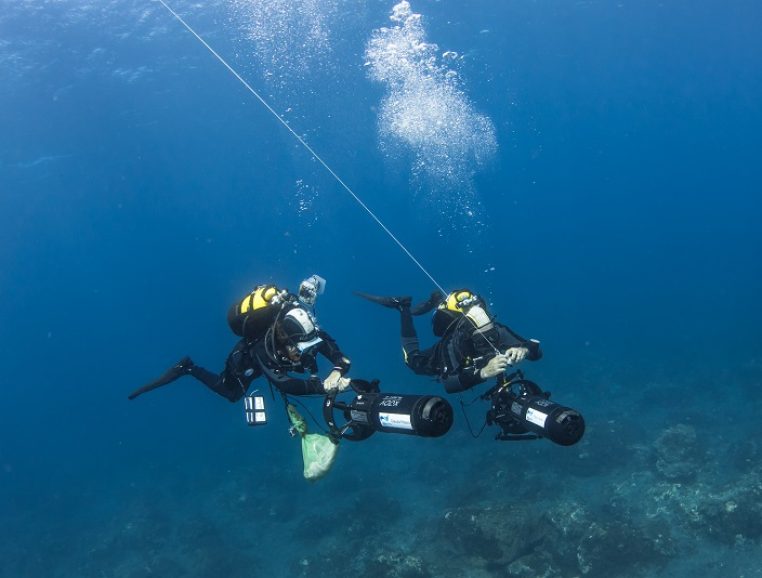
Very low risk of fatal attacks
The risk of a fatal shark attack is extremely low at a worldwide level: there are only around ten such attacks per year.
This pales in comparison with the risks associated with sports or with other animals such as mosquitos, which kill over 800,000 people every year.
Only five of the almost 500 species of shark represent a danger to humans, owing to their large size and their diet. Most accidents are caused by great white sharks, bulldog sharks and tiger sharks, which frequently swim near the coastline.
In spite of the low number of accidents, each attack is heavily mediatised, which damages the reputation of sharks.
11 sheets on concrete solutions
There are solutions to the risks posed by sharks. The 11 sheets in this dossier set out a number of initiatives from locations around the world that are known for shark attacks on people. Information, shark forecasts, search and alert, shark watch, shark spotters, separation net, individual repellant, drones and artificial intelligence, detection buoys, anti-shark barriers and radiating cables are the 11 solutions discussed in the “shark toolbox”.
There is no one solution that can be transposed everywhere and whichever system is adopted must be suitable for the local circumstances, as determined by the geography, the species present and their habits, as well as the social context.

En choisissant de consacrer aux seigneurs des mers une grande exposition, et plus largement un cycle de conférences, des colloques et un ouvrage de vulgarisation, l’Institut océanographique souhaite inviter le public à dépasser des stéréotypes bien ancrés, pour partir à la rencontre de ces super-prédateurs, bien plus menacés que menaçants"
Robert Calcagno, directeur de l'Institut océanographique
Allowing a successful cohabitation between people and sharks
There are thus innovative solutions available today to meet the risk of sharks without exterminating them from the ocean. It must be remembered that these animals are essential for the good health of the oceans.
See also
Coral reefs: solutions for now and for tomorrow
Save the coral reefs
On the occasion of the 3rd International Year of Coral Reefs (IYOR2018), the Oceanographic Institute of Monaco co-organised a symposium at the Maison des Océans in Paris. The workshop focused on the latest knowledge and research on these environments and on solutions to try to halt their decline.
This symposium, which took place on 20 June 2018, was organised by the Foundation for Research on Biodiversity (FRB), the Oceanographic Institute of Monaco, CRIOBE, the Platform Ocean and Climate (POC) and the French Initiative for Coral Reefs (IFRECOR).
Status report, pressures and threats
Its preliminary objective was to take stock of the services provided by corals and their ecosystems, their state of health and the threats they face. It then continued with two round tables bringing together scientists, managers and civil society actors around two major themes. On the one hand, how to mobilize and adapt governance to implement new tools for better protection of spaces and species. On the other hand, to exchange on the latest scientific knowledge concerning the functioning of coral reefs and innovative management solutions to develop them on a larger scale.
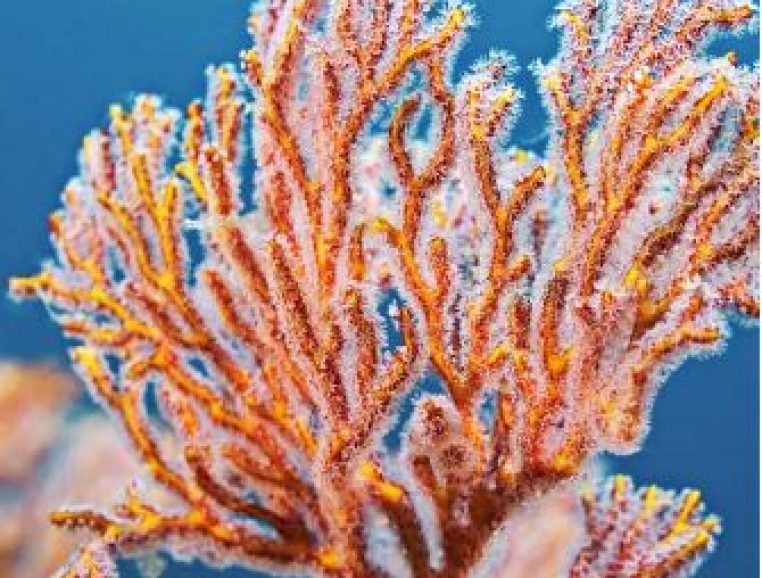
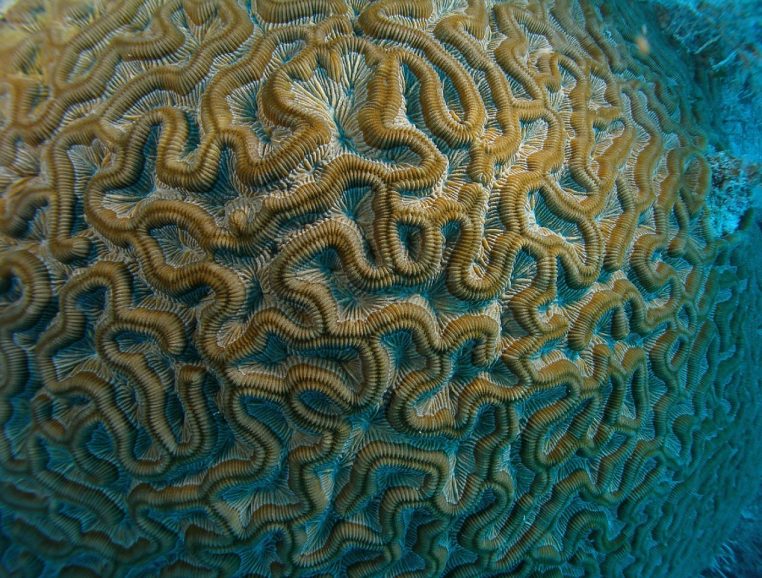
Everybody’s business?
New tools are needed to better protect areas and species and to limit anthropic pressures. Effective reef protection cannot be achieved through a unilateral approach and should involve as many stakeholders and sectors as possible in protection and governance choices. What perceptions do local communities have of the services provided by coral reefs? The place they occupy in their daily lives? On this basis, how can they be mobilized and involved more widely in decision-making? What financial tools should be developed to guarantee the viability and sustainability of conservation and protection policies?
Organising the fight
The pressures and threats to coral reefs are such that their continued existence on the planet is at stake. Nevertheless, there is still time to act. Scientific advances have revealed hitherto unknown adaptation mechanisms in certain coral strains, and various stakeholders are seizing on these results and mobilizing to ensure the sustainability of reefs.
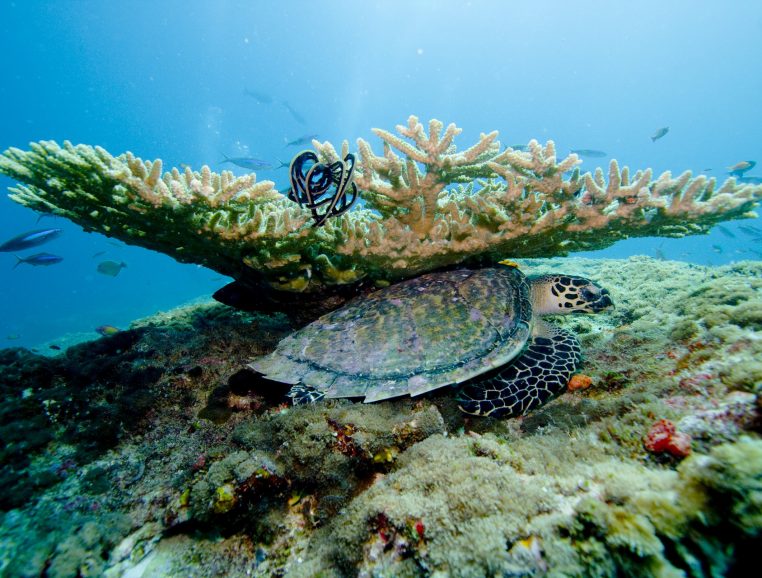
See also
Jellyfish, the new kings of the ocean
The gelling of the oceans, myth or reality?
Increasingly numerous in the world’s oceans, jellyfish, an animal that is both fragile and fearsome, could take over from fish and seriously threaten the already damaged marine balance. Robert Calcagno, Director General of the Oceanographic Institute, and Jacqueline Goy, Scientific Attaché at the Oceanographic Institute, decipher this disturbing phenomenon during a lecture given on 14 May 2014 at the Maison des océans in Paris. Nassera Zaïd reports on the event.
What do we really know about jellyfish?
Often associated with the pain of their stings, jellyfish are “gelatinous organisms that have always fascinated the public and scientists,” introduces Robert Calcagno. Nearly 1,000 species have been identified, including the Pelagia noctiluca, which is very common in the Mediterranean.
Jellyfish come in a variety of shapes and sizes ranging from a few millimetres to over two metres in diameter. 98% of their body is made up of water, formed by a bulging part (the umbrella), where the mouth and the reproductive organs (or gonads) are located, which can be observed through transparency.
All around, a series of tentacles with stinging cells are used to harpoon prey. Their sting is paralyzing, even deadly as for the jellyfish Chironex fleckeri which lives along the Australian coast.
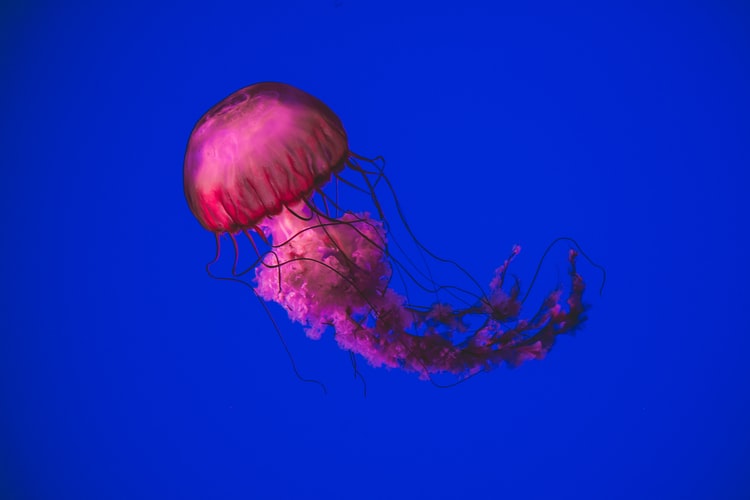
Jellyfish, a predatory instinct?
“Jellyfish are constantly eating to reproduce,” explains Jacqueline Goy, who has been studying cnidarians for thirty years.
Fertilized in the water, each egg produces a larva, the planula, which will settle on the bottom and develop a polyp which will itself multiply by budding to give rise to a colony of jellyfish.
Hunting is a necessity, hence its predatory instinct. Despite this, “jellyfish are very fragile animals. It is an animal that is not protected. They don’t have a shell like mollusks, nor do they have a test like sea urchins. A particular morphology which makes one think of “a drop of water in the sea, moving with the currents”, describes the specialist.
However, this physical vulnerability does not rule out the danger feared by scientists: its mass reproduction.
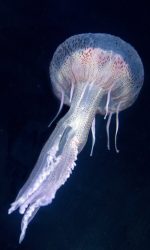
Chronicle of an invasion announced?
“Jellyfish are currently overtaking all other marine organisms and becoming dominant in the seas,” says Jacqueline Goy.
A growing proliferation which for several years has taken on the appearance of uncontrollable colonization.
Previously, there were pullulation cycles every twelve years,” explains Robert Calcagno. We even used to talk about ‘jellyfish years’. But since the 1980s, and especially since the 2000s, all years are jellyfish years. We could even say: there are no more years without jellyfish.
The main reason for this change is the impact of human activities on the oceans. First and foremost, overfishing. “By catching tons of fish (80 million are caught each year), trawlers eradicate a number of predators for jellyfish, such as tuna, turtles, sunfish … They also eliminate their competitors, small fish, anchovies or sardines that feed on the same zooplankton.”
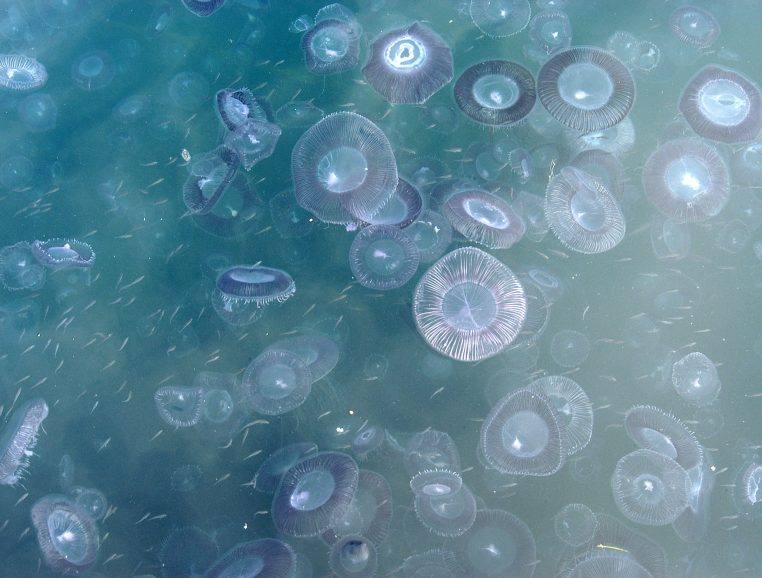
Are human activities the cause of this outbreak?
“Jellyfish are currently overtaking all other marine organisms and becoming dominant in the seas,” says Jacqueline Goy.
A growing proliferation which for several years has taken on the appearance of uncontrollable colonization.
Previously, there were pullulation cycles every twelve years,” explains Robert Calcagno. We even used to talk about ‘jellyfish years’. But since the 1980s, and especially since the 2000s, all years are jellyfish years. We could even say: there are no more years without jellyfish.
The main reason for this change is the impact of human activities on the oceans. First and foremost, overfishing. “By catching tons of fish (80 million are caught each year), trawlers eradicate a number of predators for jellyfish, such as tuna, turtles, sunfish … They also eliminate their competitors, small fish, anchovies or sardines that feed on the same zooplankton.”
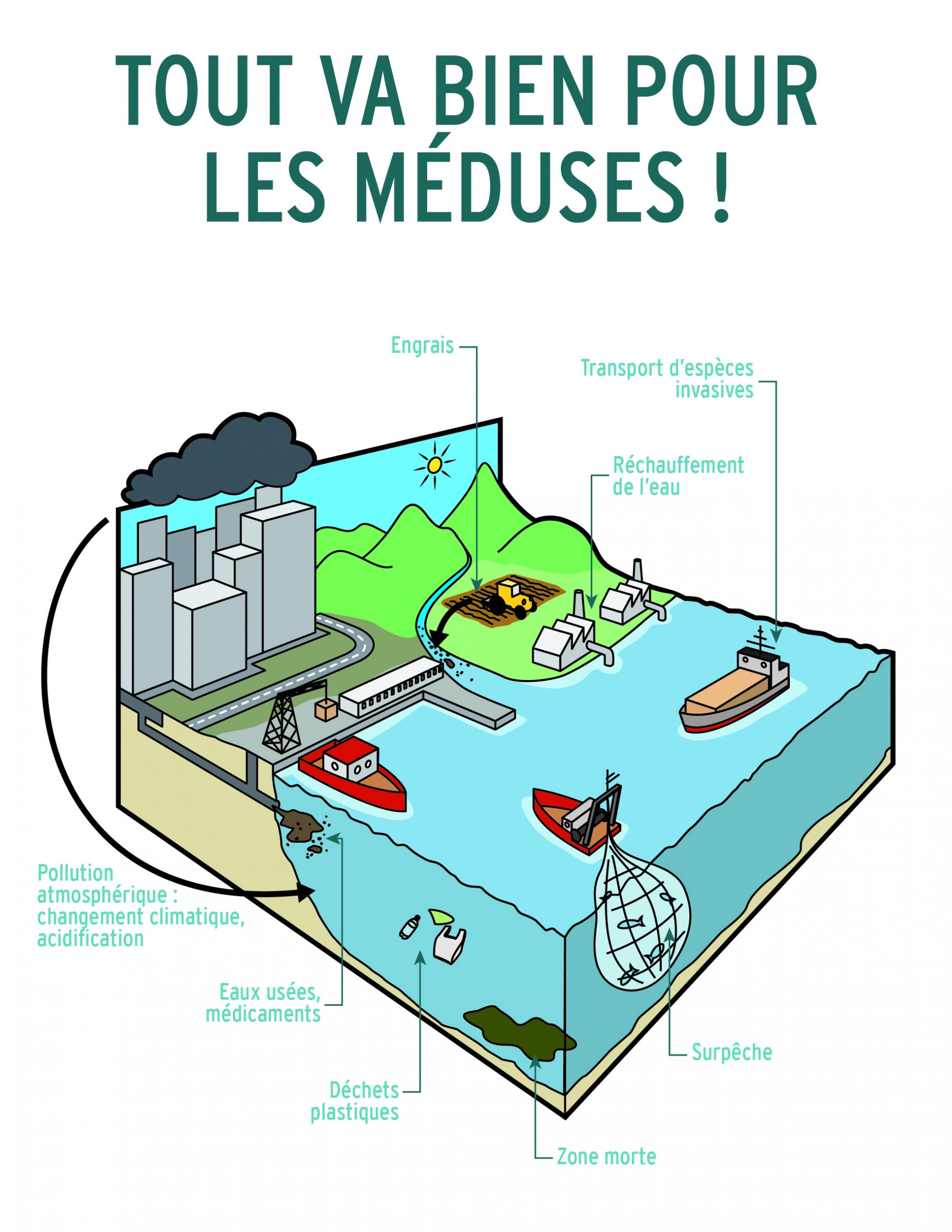
Irreversible damage to the oceans?
Jellyfish are ultimately formidable,” concludes Robert Calcagno. To understand this, you just have to look at the statistics and see that, each year, more than fifty people die as a result of jellyfish stings, compared to ten for shark attacks. But nobody talks about it that much.” And their impact is not limited to burns. Another victim of the jellyfish is the economy.
“The outbreaks have already put boats in trouble, as happened, says Robert Calcagno, to a Japanese trawler that capsized on a perfectly calm sea because of the weight of the jellyfish clusters caught in its net.
Aquaculture companies are also victims of these cnidarian clusters that come to feed on the fry and thus wipe out the farms. Namibia, once renowned for its quality fishing, has seen its fish stocks disappear due to overfishing for jellyfish. So what solutions are available to us?

What can be done about the jellyfish invasion?
Several inventions have been created, even the most improbable ones, such as the “jellyfish destroying robot” which, once immersed in water, detects and crushes the animals with a propeller. “The remedy is however worse than the evil,” Jacqueline Goy is astonished, “since by cutting them in this way, the reproductive cells are released and multiply”.
Another solution that has been tested is a protective net for the beaches. However, its high cost makes it difficult to generalize on our coasts.
Prevention by modelling to alert the public of the advance of jellyfish, organised by the Oceanological Observatory of Villefranche-sur-Mer in the form of Météo-méduses, may just help to better protect oneself.
Last option: eat them. However, it should be noted that only a dozen species out of 1,000 are edible,” says Jacqueline Goy. The high water content of jellyfish does not make it a very nutritious food.
Once the jellyfish have settled in, it’s already too late,” says Robert Calcagno. We need to restore the balance of the oceans, like 50 years ago.” How? By controlling and promoting sustainable fishing, by developing clean maritime transport and purification stations, and by recycling the hot water rejected by nuclear power stations to heat greenhouses, for example.
Jellyfish Programme: the Institute of Oceanography's lectures
Jellyfish, the new lords of the sea
Robert Calcagno and Jacqueline Goy
14 May 2014 - House of Oceans Paris
Medazur: Jellyfish weather in the Mediterranean
Gabriel Gorsky
11 June 2014 - House of Oceans - Paris
See also
TITLE
Jellyfish as seen through Natural History
Proliferating today in our oceans because of human activities, jellyfish have survived through the ages. Known and described since Aristotle, they were mainly named in the 19th century by the naturalist François Péron. Jacqueline Goy retraces their history through history.
What is the connection between Aristotle, Pliny the Elder and jellyfish?
In antiquity, Aristotle was interested in them and among the hundred or so marine animals he described, he called them cnidae, which means “stinging”, specifying that they move here and there on the water. In homage to Aristotle, naturalists of the 20th century created the phylum of cnidarians to classify jellyfish, corals, sea anemones… which all sting. Four centuries later, Pliny the Elder observed the movements of jellyfish, which reminded him of the contractions and dilations of breathing, and he named them Pulmo marina, the marine lung.
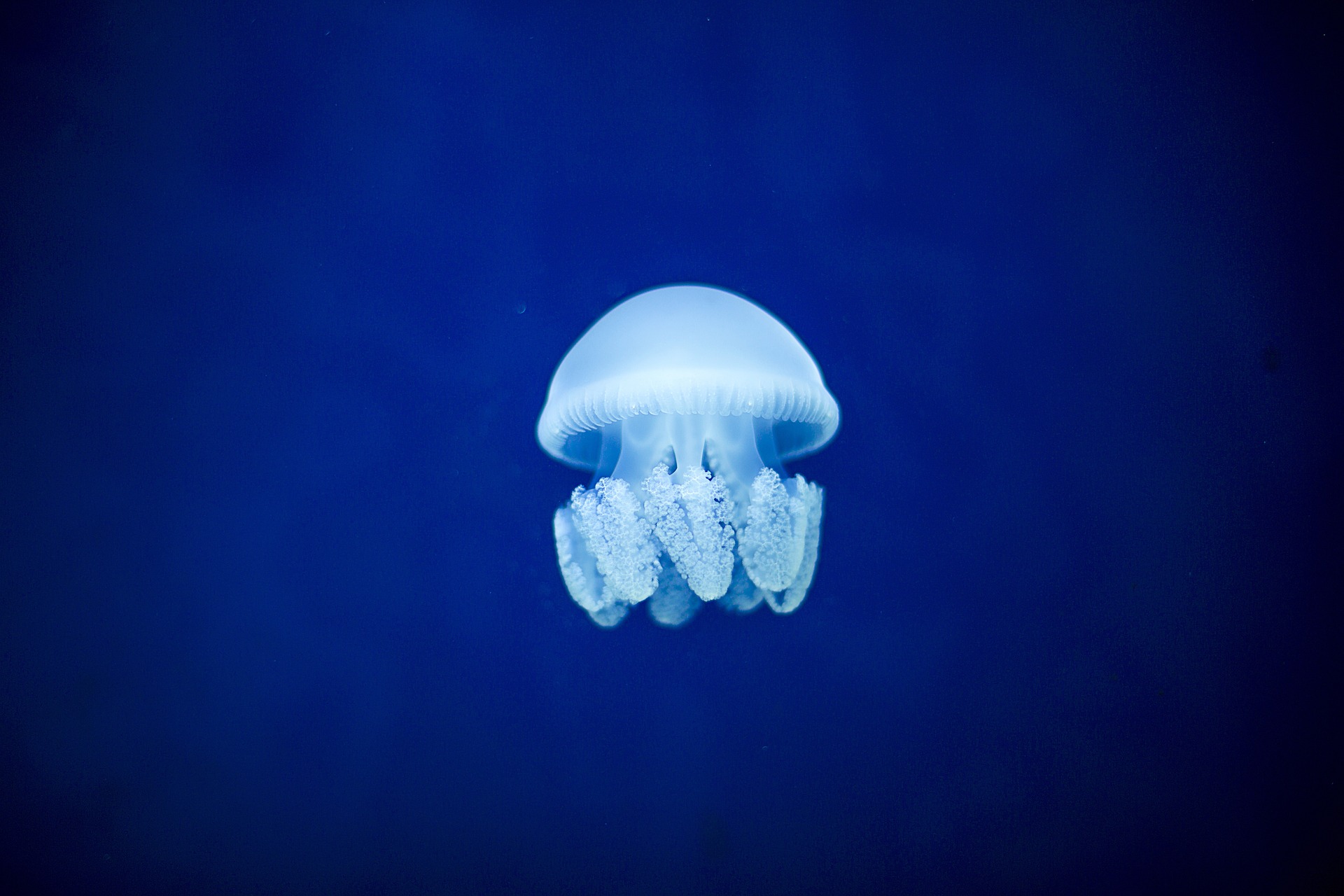
The fifth species of nettle
In the Middle Ages, the marine bestiary was mainly populated by monsters, chimeras and mermaids, especially since this period was more interested in theology than in the study of nature.
It was not until Guillaume Rondelet and his work Histoire entière des poissons published in 1554, in which he described a series of stinging animals called “sea nettles”. The fifth species is the jellyfish Rhizostoma pulmo, which has a fabulous fate, arranged in a crown, in the painting TheAllegory of Water by Giuseppe Arcimboldo in 1566.
The great turning point in the knowledge of zoology is obviously Carl Linnaeus. He proposed a classification of the living world, both plant and animal, in his Systema naturae, a seminal text, and in the fourth edition of 1744, he introduced the name medusa by comparison with the face of the Gorgon.
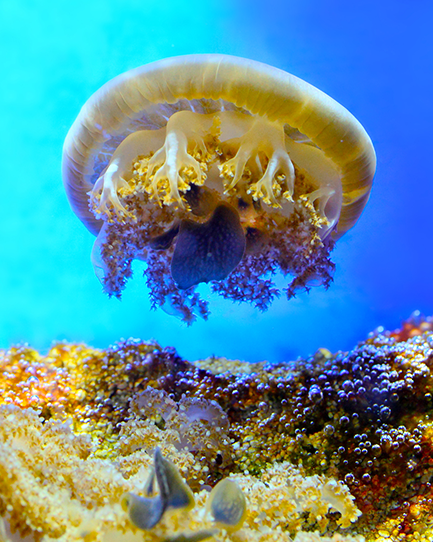
in the 19th century, medusas acquire ancient names
Jean-Baptiste de Lamarck, who was a professor at the National Museum of Natural History when it was founded in 1793, assumed that life originated “in the gelatinous masses scattered in the great ocean”. And the gelatinous masses could well be the jellyfish.
This is why a young naturalist, François Péron, took up the subject to make a monumental study of it. According to Albert Soboul, a historian specializing in the French Revolution, revolutionary fashion introduced a majority of heroes from Antiquity into the first names and it also fell on the jellyfish!
Péron does not hesitate to give the names of gods and goddesses to his species. Thus, there are Cepheas, the Cassiopeaand Persaand Chrysaora, of the Geryonia and others, all dedicated to the characters that revolve around the myth of Medusa, names that are still in force.
See also
Jellyfish: the conquest of the oceans
Jellyfish, conquering the oceans
Jacqueline Goy, an oceanographer-biologist specializing in the study of jellyfish, and Robert Calcagno, director of the Oceanographic Institute of Monaco, co-authored the book “Jellyfish, conquering the oceans” published in 2014. Well-documented and extensively illustrated, this book helps us to learn more about these organisms, which are both feared and fascinating, and to understand how climate change is encouraging their expansion.
Knowledge of jellyfish has fortunately advanced recently, but my concern regarding the exhaustion of the oceans has too. It is a certainty that jellyfish appear to be the only species that prosper throughout the ocean and that benefit from all our excesses. [...] They are clearly showing us a road we do not want to take, but that we are drawn into following by our short-term appetites. Up until now we have associated the sea with freedom and just letting things happen. We have become as complacent with the oceans as we have with our environment in general.
Extrait de la Préface de S.A.S. le Prince Albert II de Monaco
What if the oceans were “gelling"?
Jellyfish are thriving. Graceful and fragile in appearance, they adapt to marine pollution, take advantage of the excesses of fishing and gradually conquer our seas. Is ocean gelling inevitable? How far will the jellyfish go?
Through the book-documentary “Jellyfish: conquering the oceans”, the Oceanographic Institute puts into perspective the degradation of ocean health and the outbreak of jellyfish. A reminder of the risks of reckless overexploitation of the marine environment.
Jellyfish, sentinels, alert us to the quality of the water. This book questions the relationship between man and the sea, the natural environment and the fragile balance that it is vital to preserve.


Do jellyfish have unthought-of powers?
The apparent fragility of these organisms hides a formidable efficiency. Primitive in appearance, they let themselves be carried by the currents and in fact go to the essential: feeding and reproduction. However, their efficiency and robustness are exceptional.
Their life cycle is astonishing, between dormancy and massive reproduction, even rejuvenating when the need arises. Jellyfish hold the key to immortality. They also have an exceptional capacity to adapt. They have adapted to all oceans, including fresh water.
Today, they are resisting our excesses, when we pollute the oceans with our nitrates, our medicines or our plastic waste. After having taken advantage of the boom in maritime transport to conquer new spaces, they are only waiting for climate change to launch their next offensive.
Man and jellyfish: friends or enemies?
Jellyfish can cause even paralysis of our activities. On European beaches, jellyfish are the nightmare of holidaymakers. On the other side of the world, their bites can be deadly. And they also attack fishing, aquaculture and even nuclear power plants, which they choke!
However, man is the main ally of jellyfish: overfishing rids them of their predators and competitors; various types of pollution feed them or further strengthen their robustness. By offering them the oceans, they allow them to enjoy a new golden age.
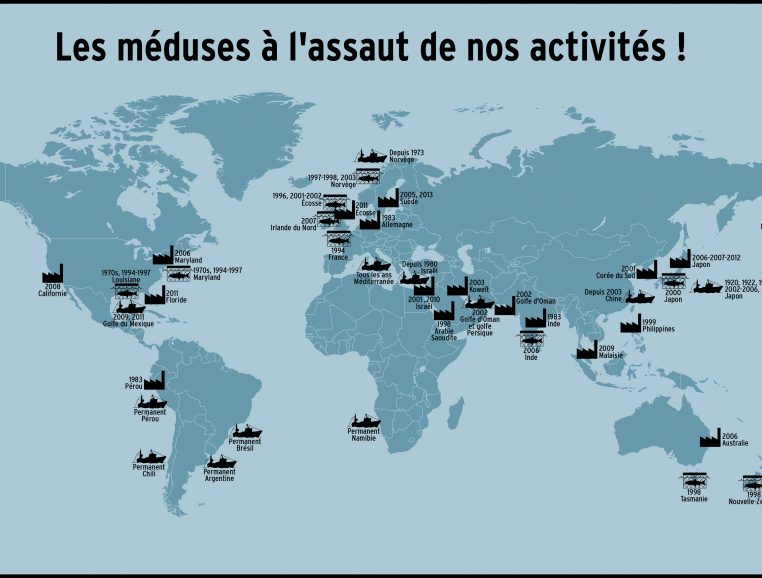
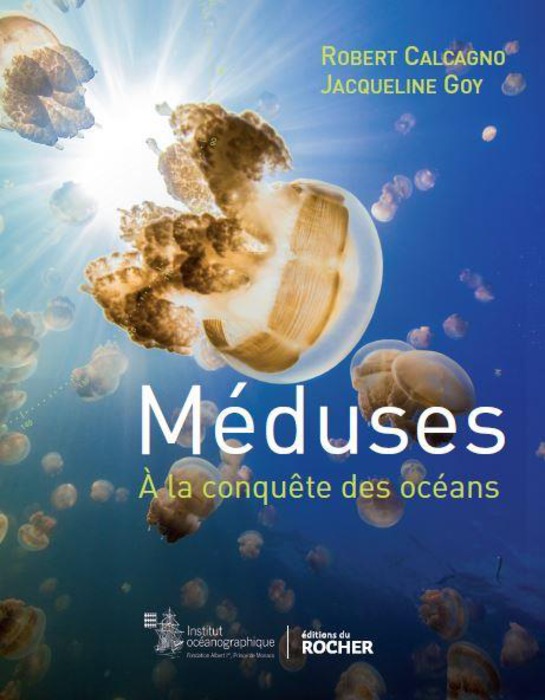
Learning about jellyfish at the Oceanographic Institute
Despite their simplicity, jellyfish can also be of some service to us and have already won two Nobel prizes. Perhaps one day they will share the secret of immortality? Science is going after their secrets.
Jellyfish are thus at the heart of a comprehensive programme run by the Oceanographic Institute of Monaco. The aquariums of the Oceanographic Museum offer a real encounter with jellyfish (aurelias, cassiopaea…).
In addition, conferences and temporary exhibitions were organized in 2014 on the theme
“The new lords of the oceans: sharks or jellyfish?”
In addition, conferences and temporary exhibitions were organized in 2014 on the theme of “The new lords of the oceans: sharks or jellyfish?”, both at the Maison des océans in Paris and at the Oceanographic Museum in Monaco.
The book “Jellyfish: conquering the oceans” is a further development of this programme. It is published by Éditions du Rocher and is available for 19,90€.
See also
A robust life cycle...until immortality?
A simple yet complex organism, the jellyfish is often feared by bathers but fascinates scientists. There are over 1,000 species of jellyfish, and little is known about most of them. Nonetheless, their capacity for survival, adaptation and reproduction seems unrivalled. Some are even believed to be ‘immortal’.
Jellyfish have reproductive superpowers
Jellyfish represent the first manifestation of sexuality as a mode of reproduction for multicellular animals. There are male and female jellyfish. The gonads are formed in close relationship with the gastro-vascular system. The male gonads produce sperm and the female gonads produce eggs. Most of the time, the reproductive cells are discharged directly into the sea where fertilization takes place. But in some species of jellyfish, fertilization is internal. Sperm released into the sea are ingested by the females and reach the eggs to fertilize them. The female then lays an egg. Pelagia noctiluca, for example, discharges large 0.3 mm eggs through its mouth, which are clearly visible to the naked eye. There are hermaphroditic organisms, possessing both sexes. This is the case of Chrysaora hysoscella, a very large jellyfish from the Atlantic coast. However, the male elements are always earlier than the females, which does not prevent self-fertilisation.
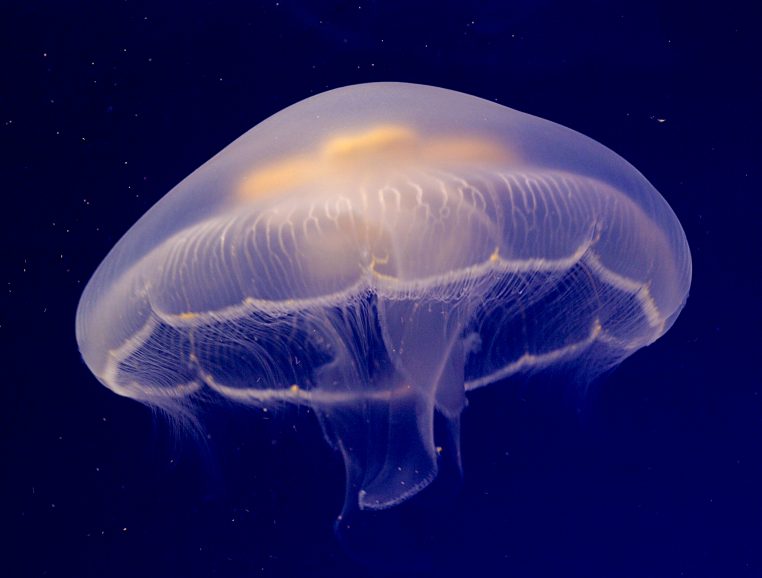
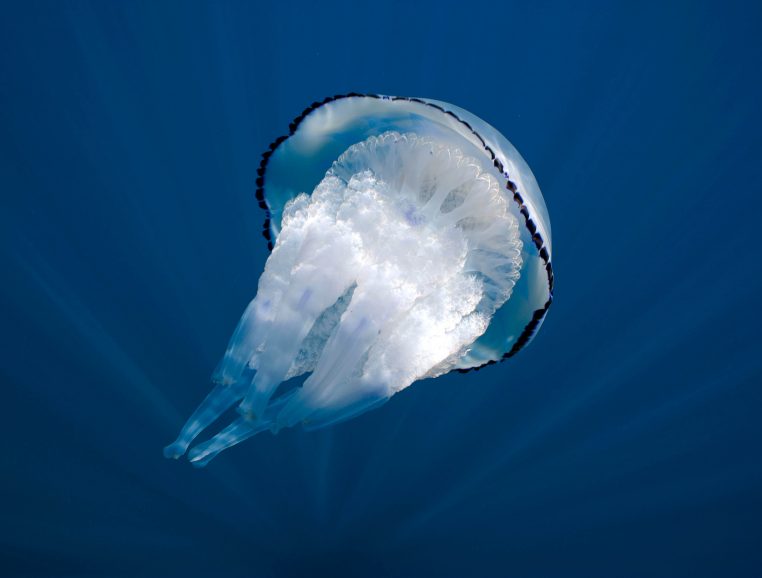
Do jellyfish travel the seas for their entire life?
Most jellyfish have two stages in their life cycle. The fixed stage is called hydrarium. The jellyfish is fixed on the ground, motionless. Some jellyfish have only one fixed stage; for others, this stage is cyclical. The free stage is called a jellyfish, which can be confused with the jellyfish as an animal.
The early stages of development are identical to hydromedus and scyphomedus, although they have a different life cycle. After fertilization, the egg evolves within a few hours into a ciliated larva called a planula.
The budding of hydromedusas and siphonophores
In hydromedusae, the planula falls to the bottom and settles there. It then transforms into a small polyp with stinging tentacles and a single central orifice, which is both mouth and anus. In hydromedusae and siphonores, such as the physalie, a budding phase then occurs. Once formed, the solitary polyp will immediately produce buds by asexual multiplication. These buds evolve into secondary colonies. This is the beginning of a process that generates a colony of polyps linked together by a canal or stolon. Some of the buds may break off and reproduce a new colony. Some species become invasive, such as the Clytia.
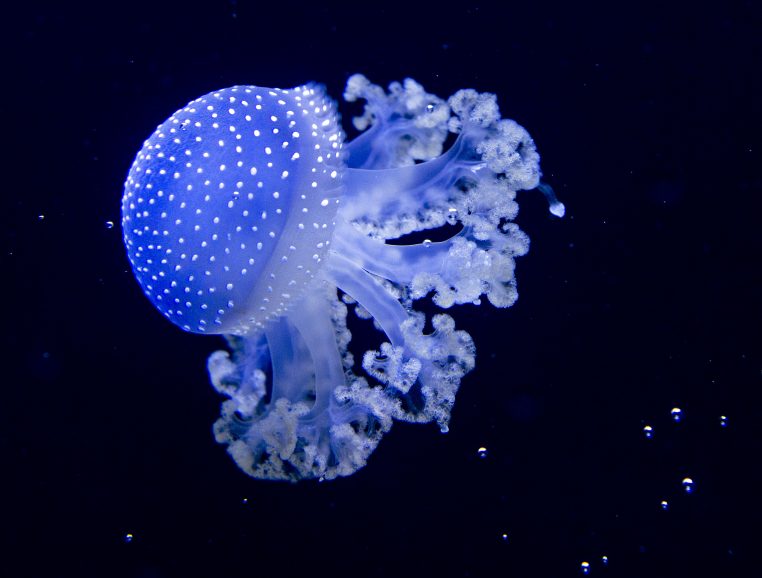
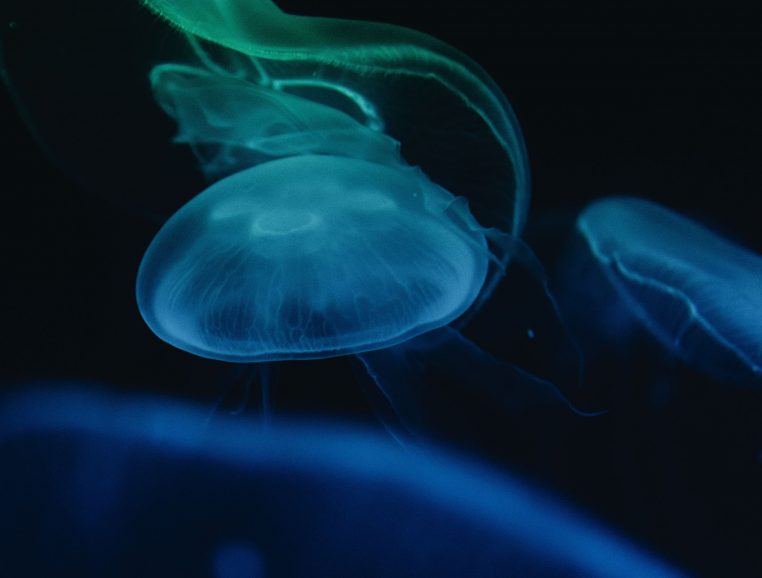
The ‘strobilation’ of scyphomedusas
In scyphomedus, such as Aurelia aurita, the planula also falls to the bottom and attaches itself there. It then becomes a polyp of a different shape, called a scyphistome, which can bud and form a small colony. Most of the time these forms are solitary. The food and the temperature favour the budding of jellyfish. Thus, transverse grooves appear on the upper part of the scyphistome, this is the strobilation. One can imagine the scyphostome as a pile of plates as often mentioned in the treaties of zoology. The first segment is released by violent contractions and so on. Called ephyrules, these small jellyfish thus released grow to become adult sexed jellyfish.
Are there immortal jellyfish?
In 1988, a German student discovered Turritopsis. Like most hydrozoans, Turritopsis goes through two life stages: the polyp stage and the medusa stage.
Adult jellyfish produce sperm and eggs. Once fertilized, the egg forms an egg, then a larva which, when it falls, will settle as a polyp. For Turritopsis, the process is a little different. Instead of dying, the jellyfish falls to the ground, where its body folds in on itself, as if in a fetal position. The umbrella reabsorbs the tentacles and degenerates into a gelatinous blob. After several days, it forms an outer shell, a cyst. Then, root-like stolons grow and elongate until they produce a polyp. The new polyp generates new jellyfish and the process starts again.
Turritopsis is thus nicknamed the immortal jellyfish. However, this process is not specific to it. Researchers have observed it in other species such as Scolionema and Craspedacusta. Finally, it should be noted that it has only been observed in the laboratory, when the conditions of the farm were deteriorating.
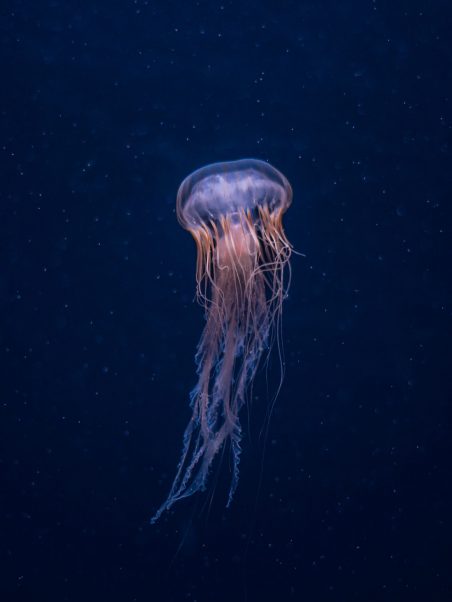
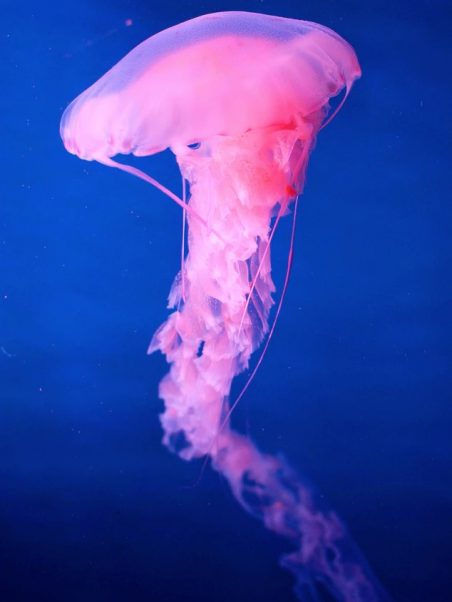
The metamorphosis of box jellyfish
Highly venomous, even deadly to humans, the cubomedus is found in tropical areas. For their reproduction, they are equipped with a spermatophore, a pocket where spermatozoids are grouped. These are deposited by the mouth of the male on a tentacle of the female. The female then collects the sperm with her mouth. Fertilization takes place in the female’s stomach pouches. After fertilization, as with other species, a planula is formed. The polyp from the planula has captive tentacles. These allow it to crawl along the bottom before settling. It then completely metamorphoses into a single jellyfish.
See also
Jellyfish and man
Dreaded since antiquity, jellyfish have only been studied by scientists since the 20th century. Today, we are discovering their capacity for adaptation and regeneration. This gelatinous animal is a gold mine for medical and biochemical research, which hopes to use their particularities to heal. But jellyfish are proliferating, perhaps to the point of changing biotopes, and seem to be taking advantage of declining fish stocks. Let’s take stock with Jacqueline Goy, author of this scientific fact sheet.
Are we right to fear jellyfish?
In ancient times, the nuisance caused by jellyfish prompted Aristotle to give them the name “cnid” (Greek for “stinging”) and, as a tribute, scientists created the group of cnidarians to designate all animals with this function.
Jellyfish stings are not all of the same severity and, on our coasts, they can cause simple itching or deep ulceration. This is precisely what the sailors felt when sorting out trawl bags filled with physalies during the Prince Albert I of Monaco’s campaigns off the Azores. The physalies are not jellyfish but siphonophores whose long tentacles recover the preys by paralyzing them thanks to their toxins. Studied by two scientists, Charles Richet and Paul Portier, whom the Prince took on board, and tested on animals, the toxin had an effect on the heart and lungs, more violent on second contact. Both scholars called this reaction anaphylaxis, the opposite of phylaxis or protection. This is the height of allergies. Charles Richet was awarded the Nobel Prize in Medicine and Physiology in 1913.
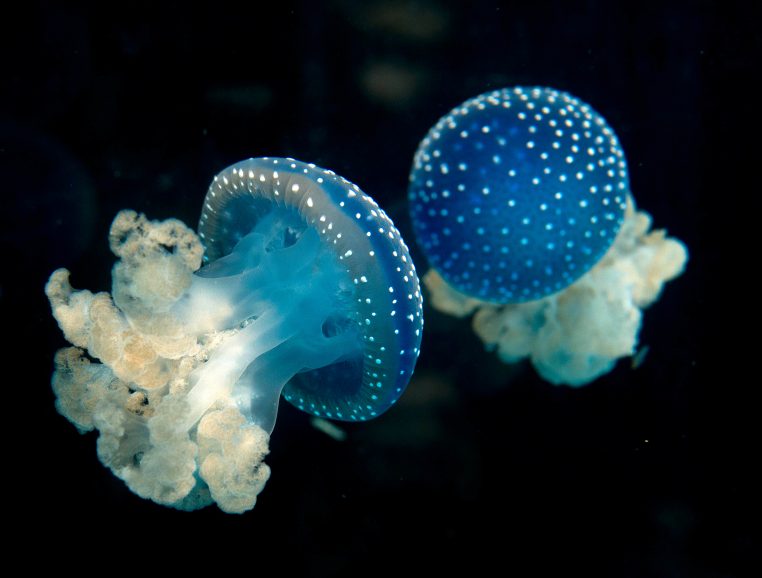

Will we end up eating jellyfish instead of fish?
Overfishing leaves food available that is not consumed by fish, and jellyfish take advantage of this, which encourages their growth. The increase in water temperature can accelerate the reproduction of jellyfish, and the young are not likely to suffer from starvation in this favourable trophic environment. This general gelling of the oceans due to human activity is a dangerous deviation for the economy of the seas because jellyfish are not very valuable as food. Eating them – drinking them would be more accurate because of the 96% water content – does not constitute an energy meal.
Not so different from humans?
Jellyfish have eyes distributed along the edge of the umbrella: simple pigmented spots or with a cornea, a lens and a retina with a bipolar pigment layer. This is the first outline of cephalization, the study of which gives interesting perspectives for healing in cases of retinal degeneration. Another surprise after the mad cow disease which directed the research of collagen towards other animals than bovines, is the discovery of a collagen of human type in jellyfish. It is used as a fake skin for burn victims, as a culture medium in cytology and is an effective anti-wrinkle in cosmetology.
